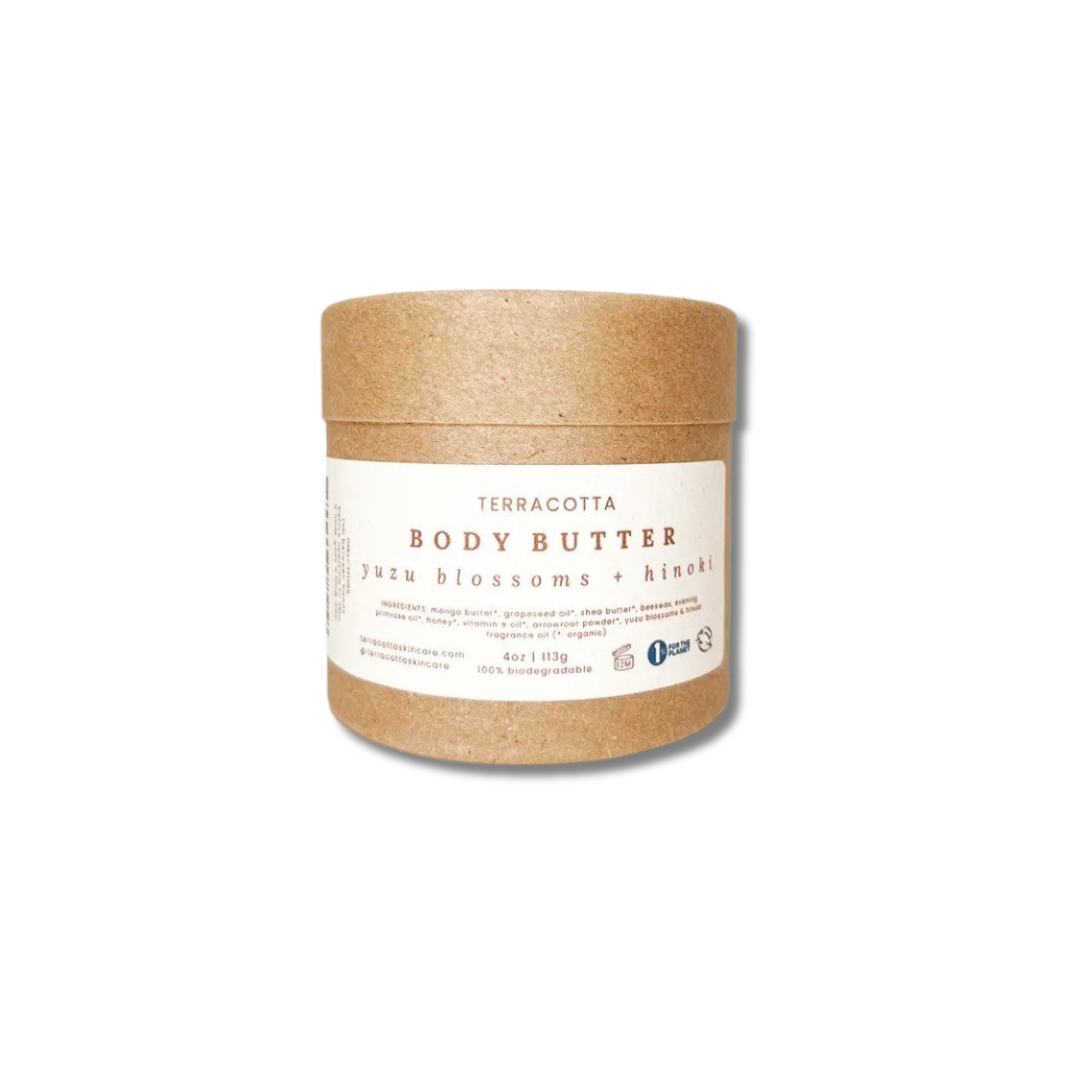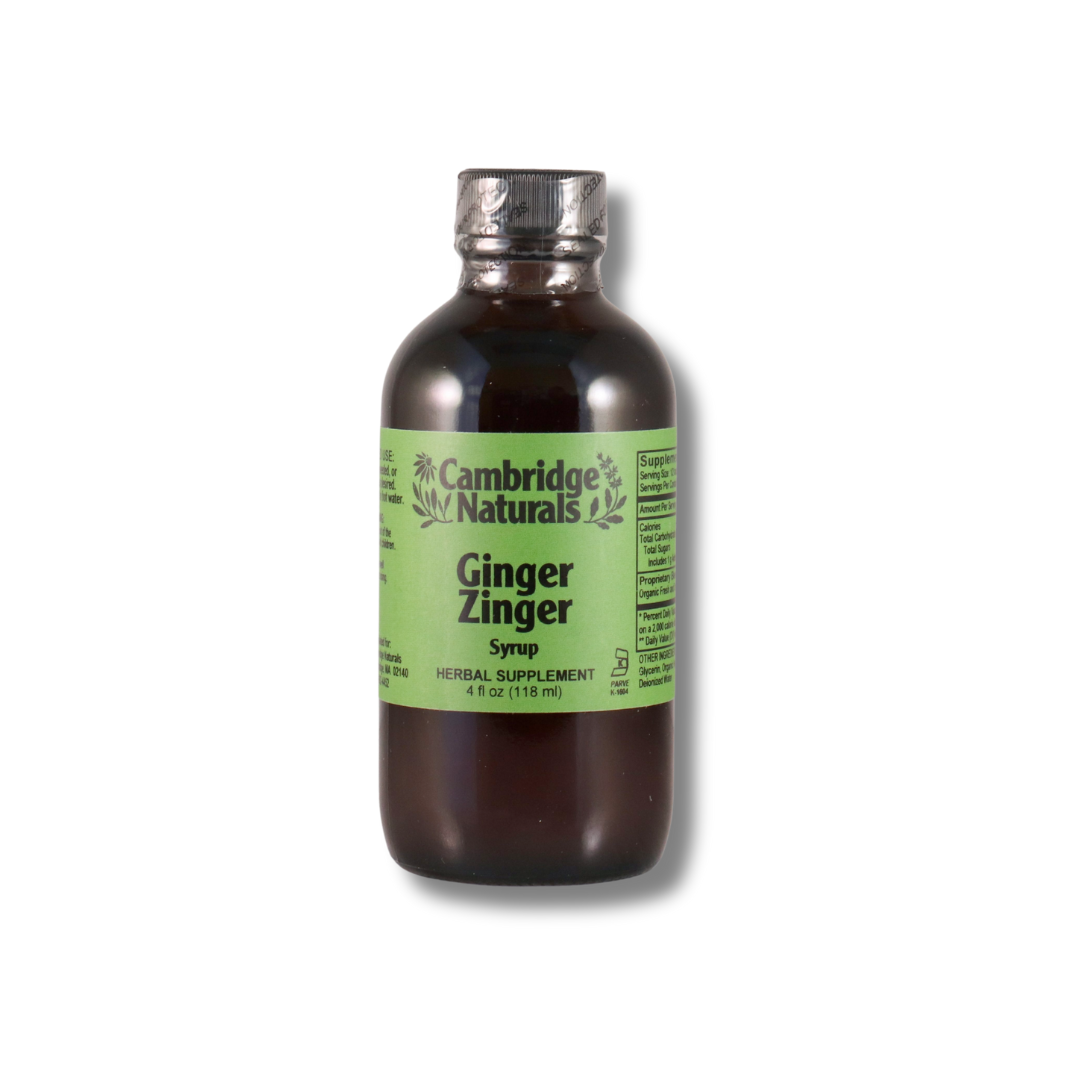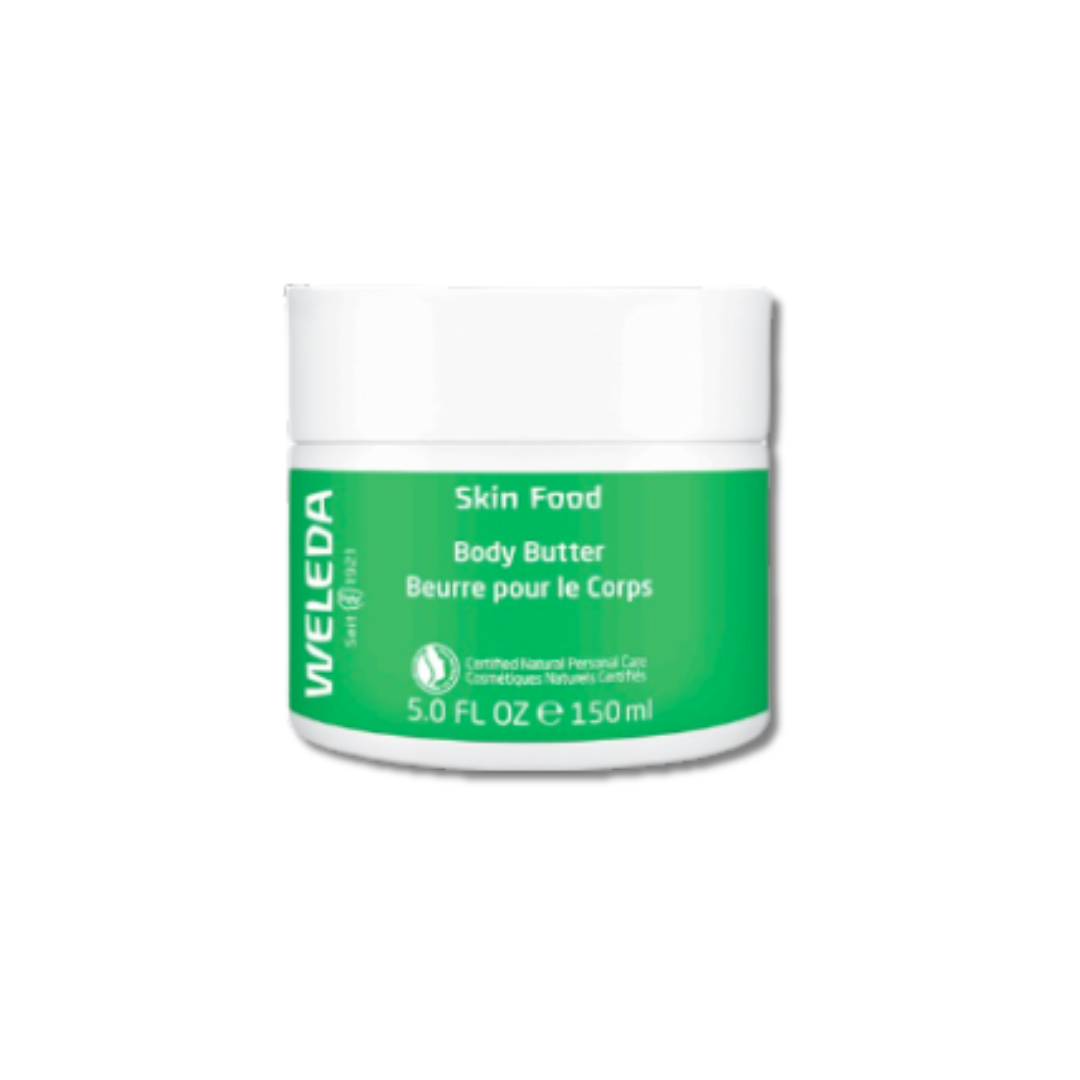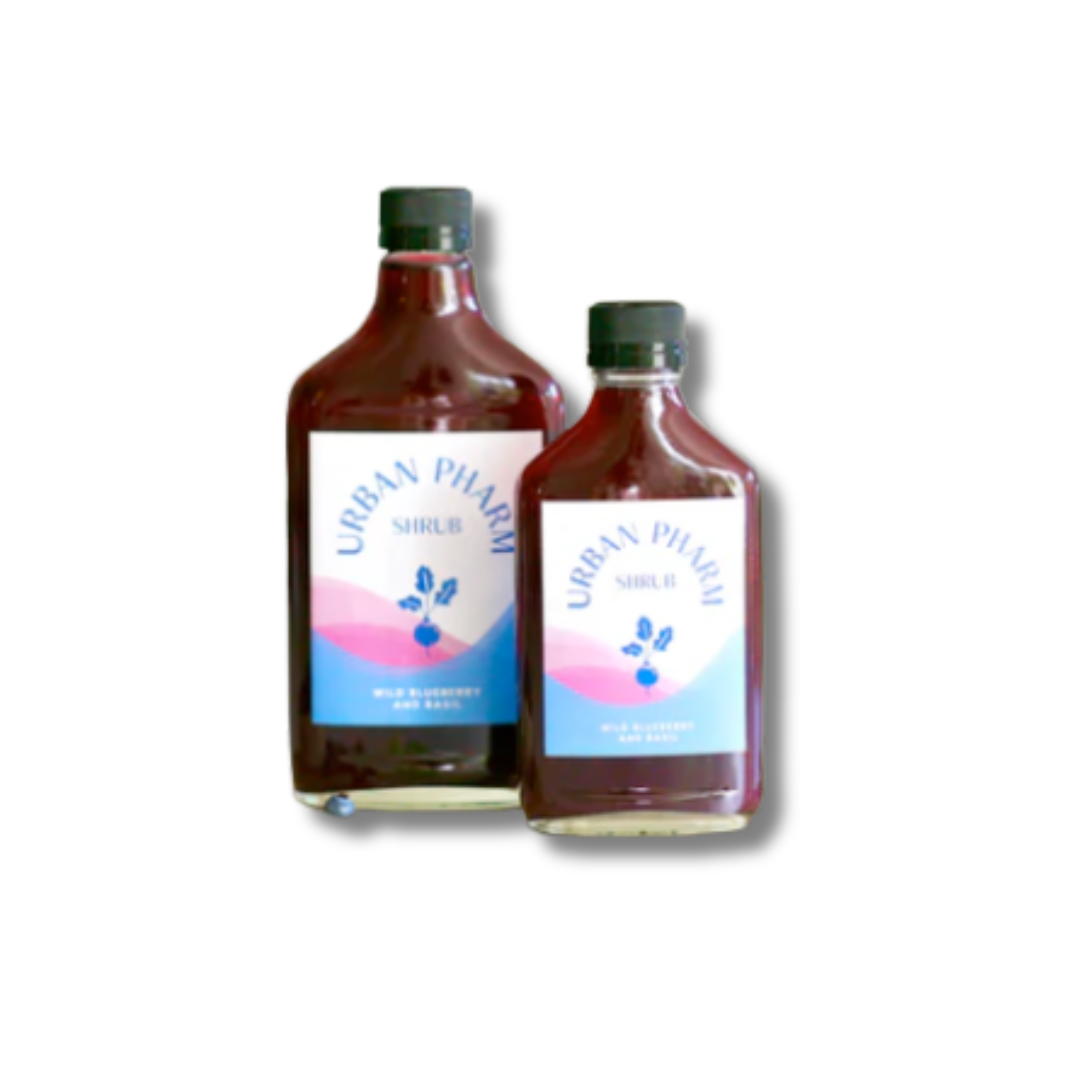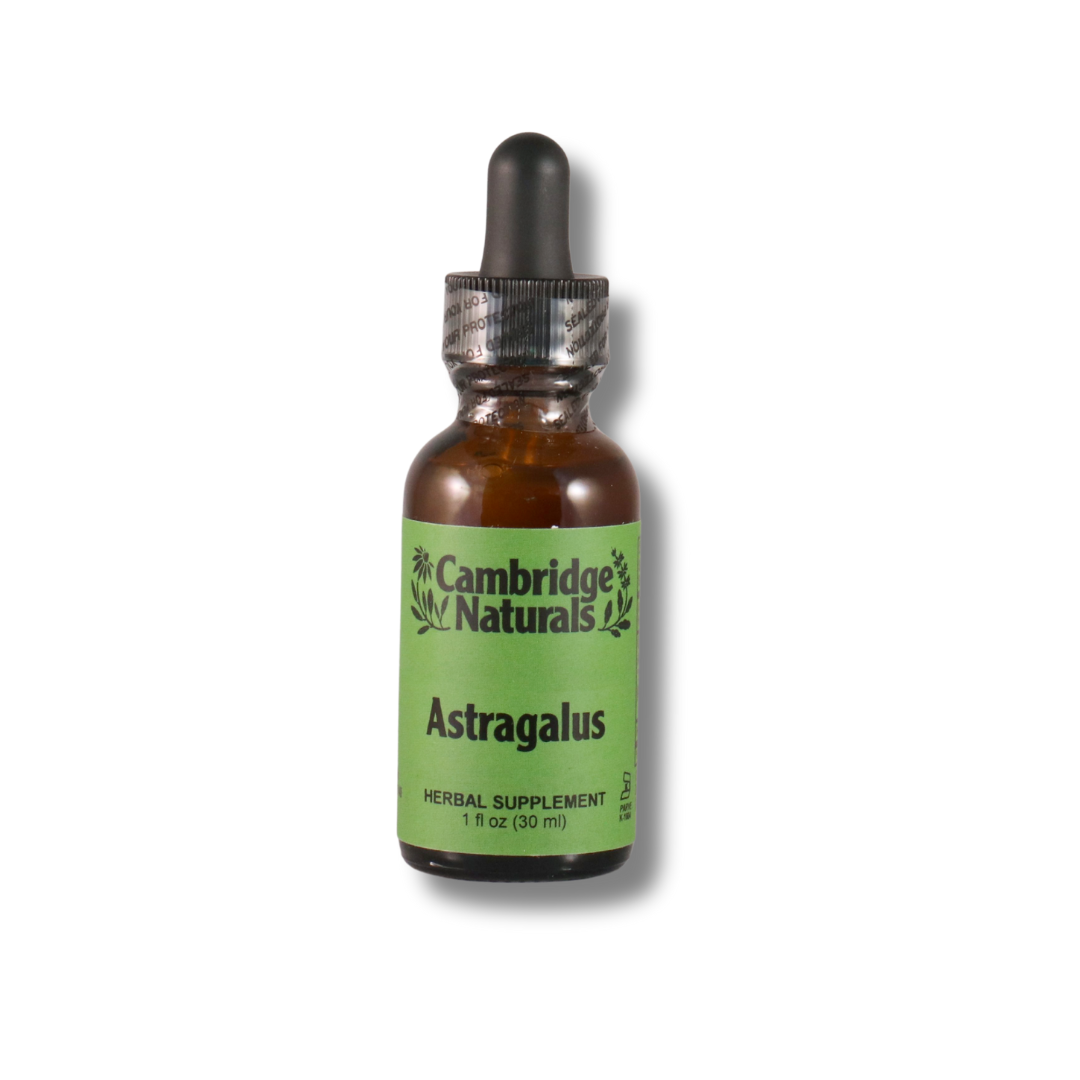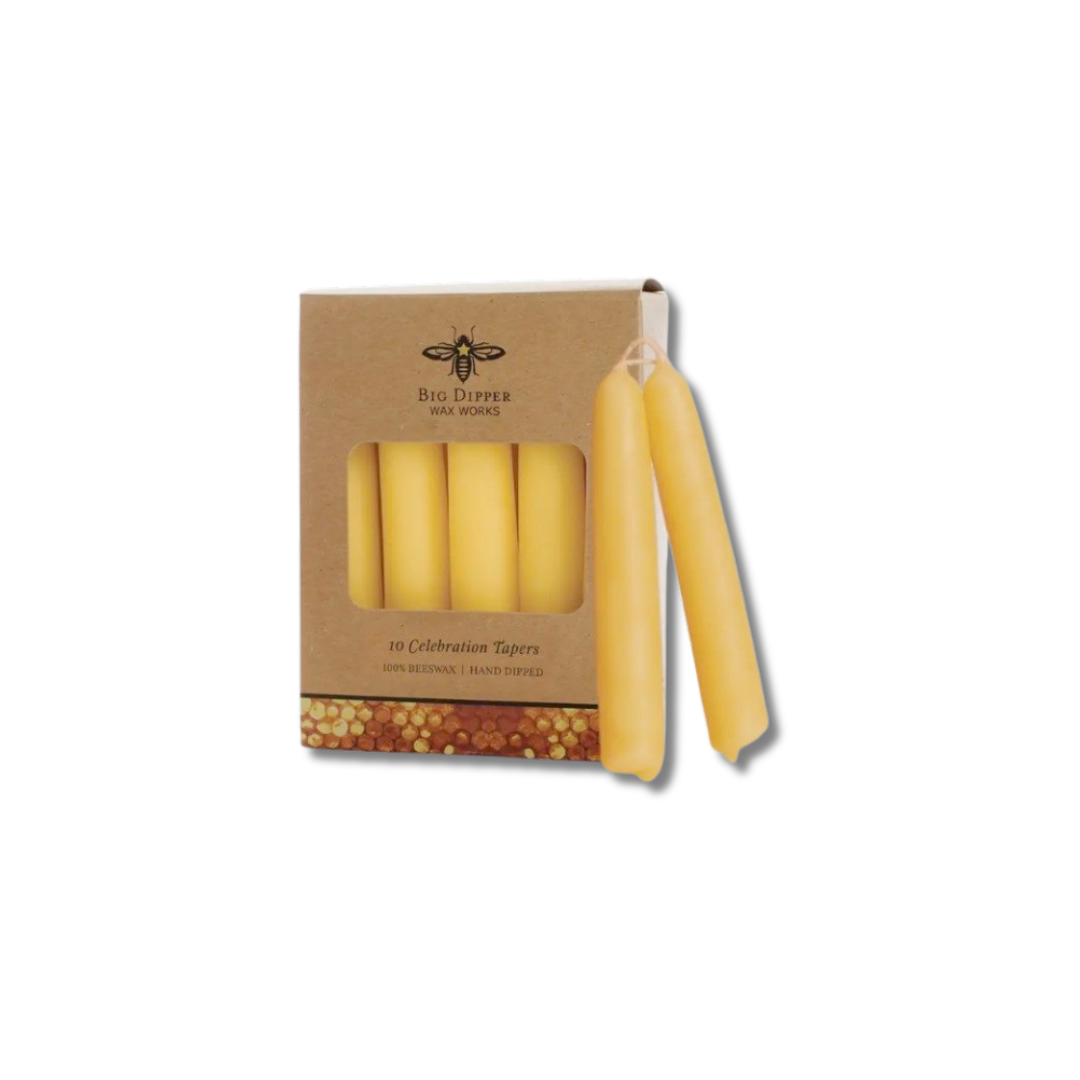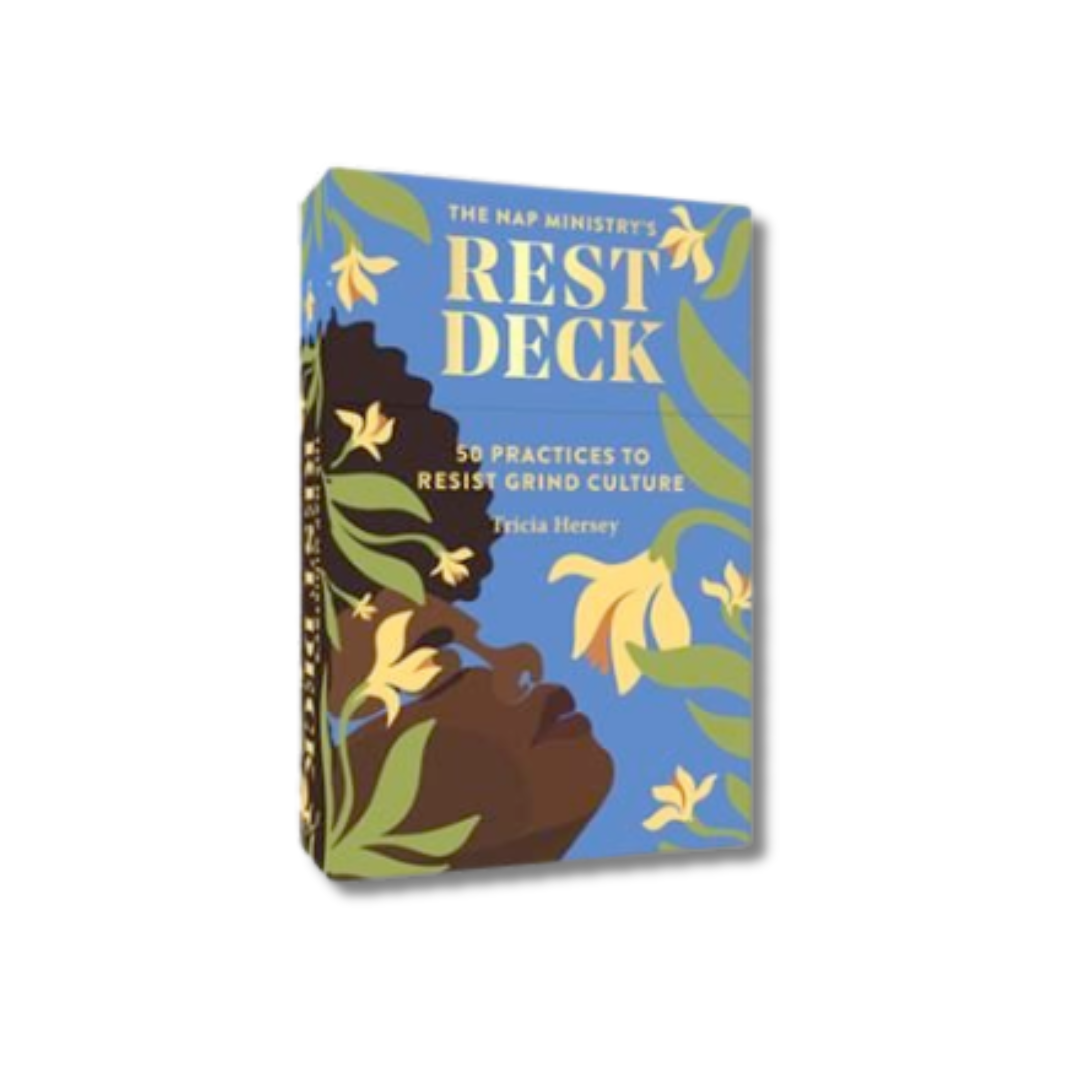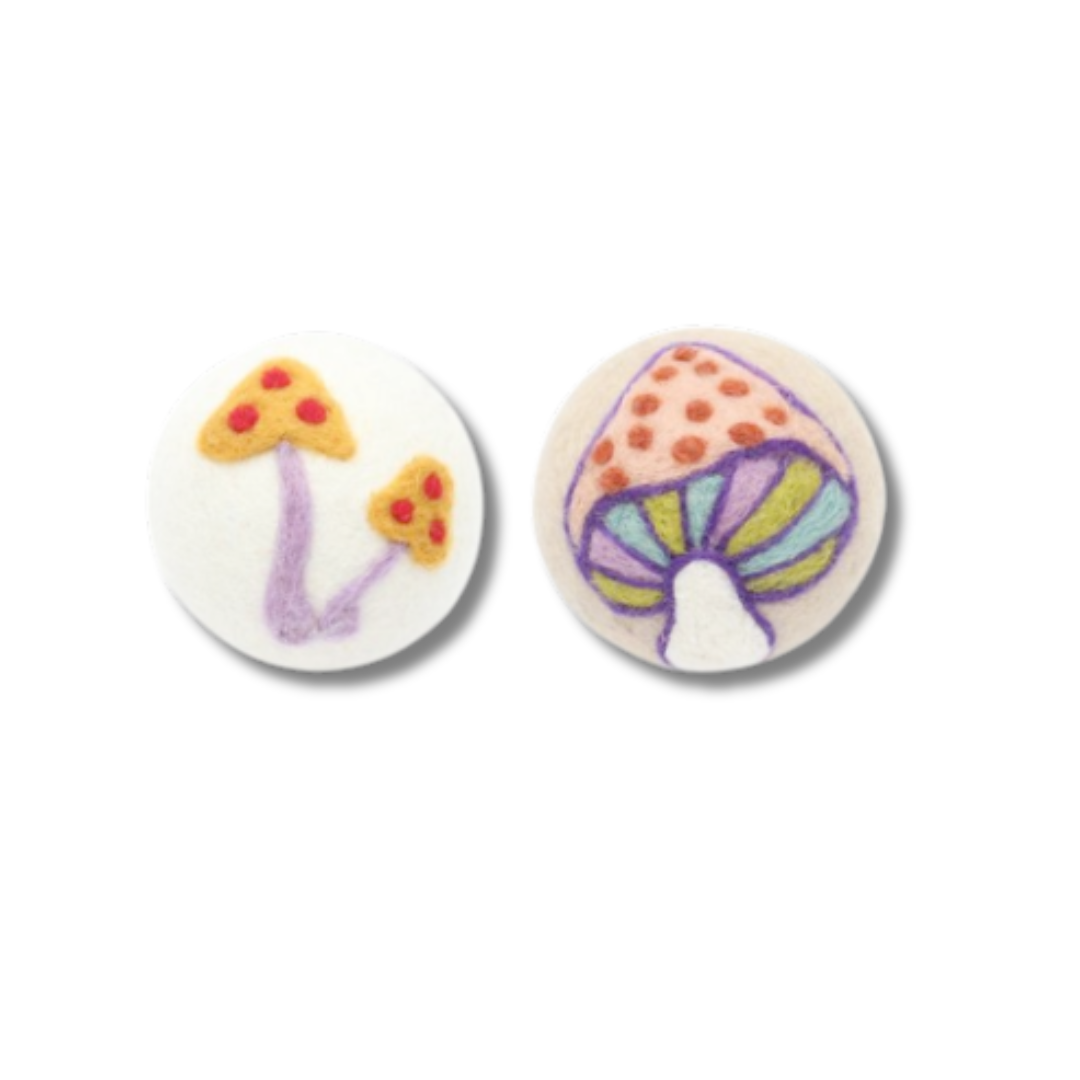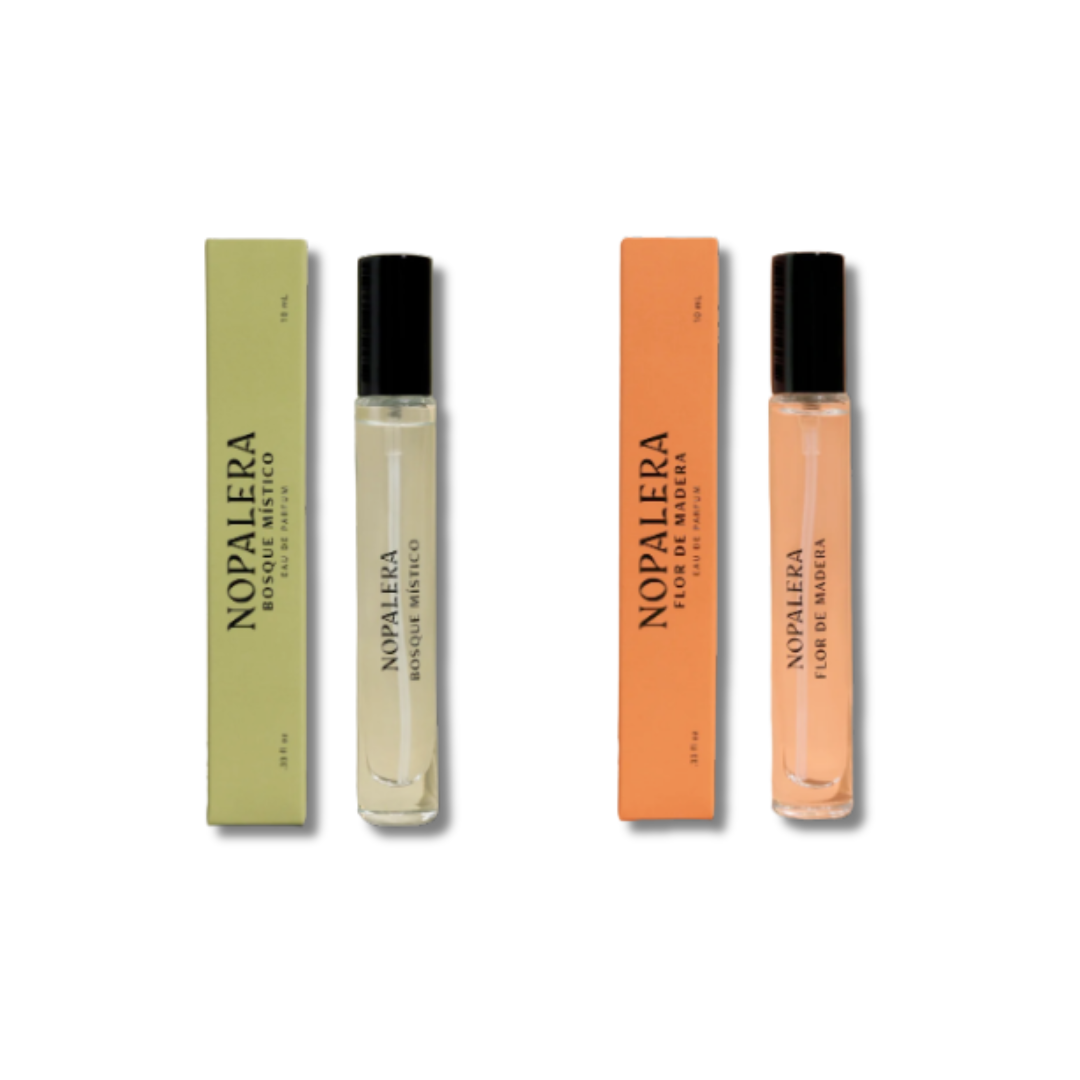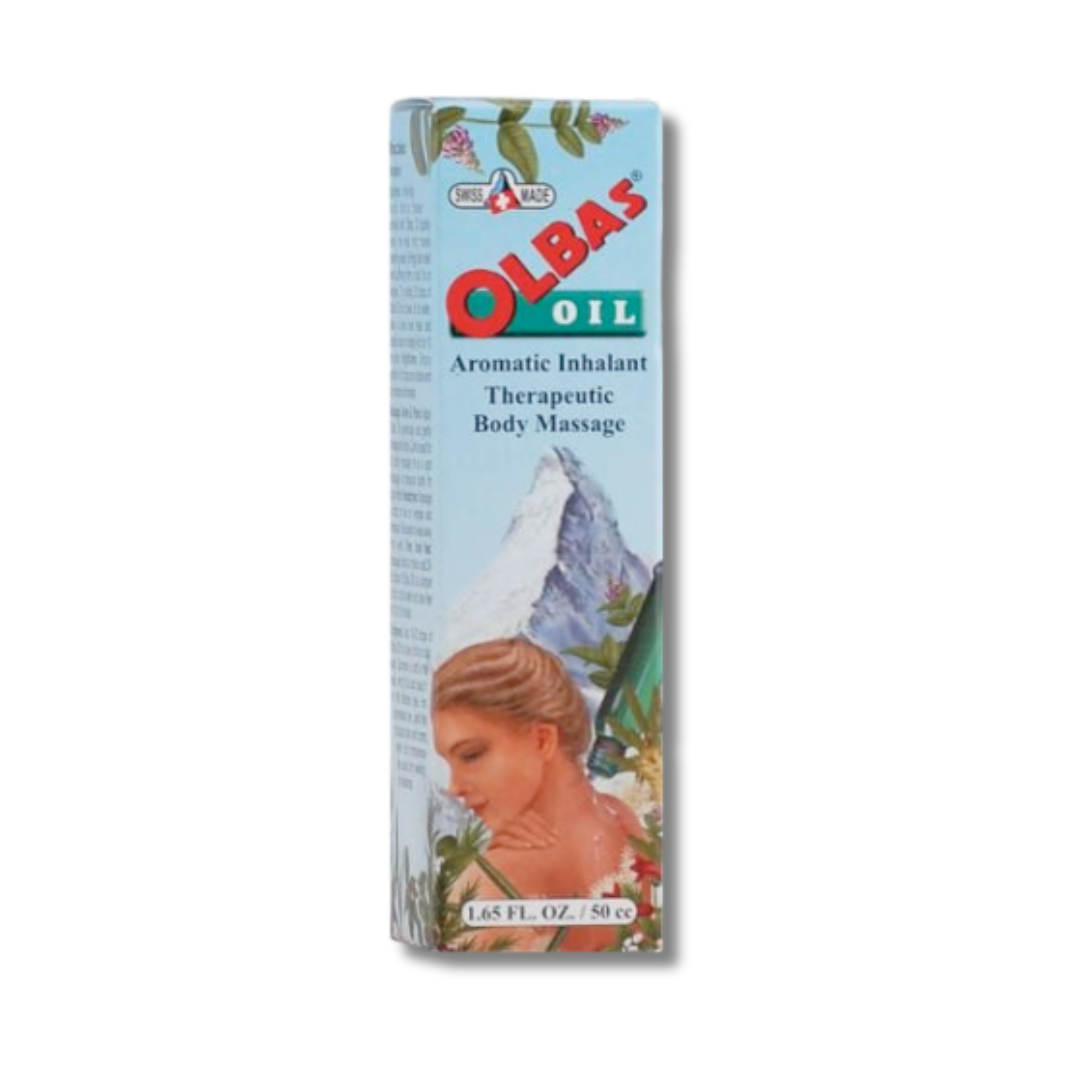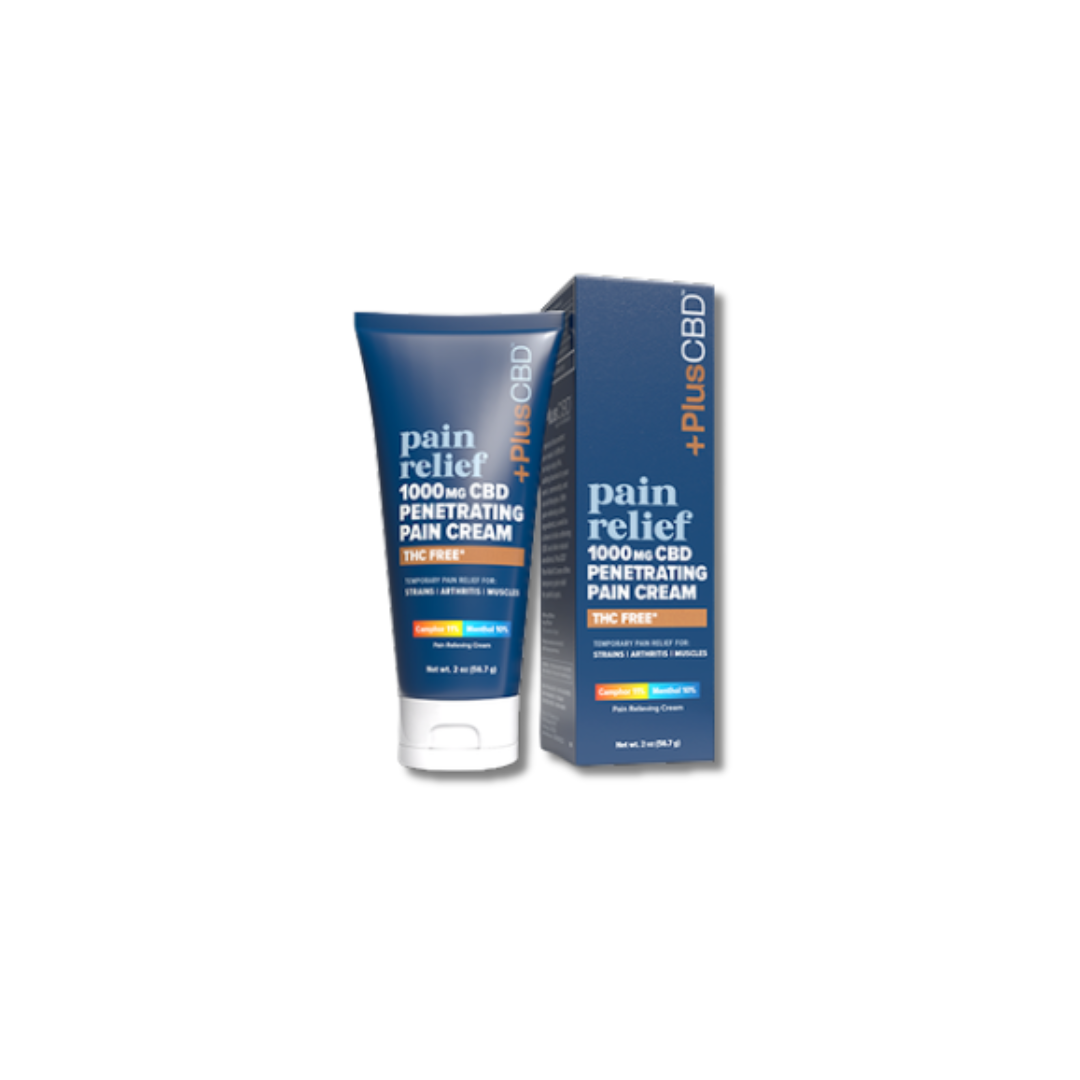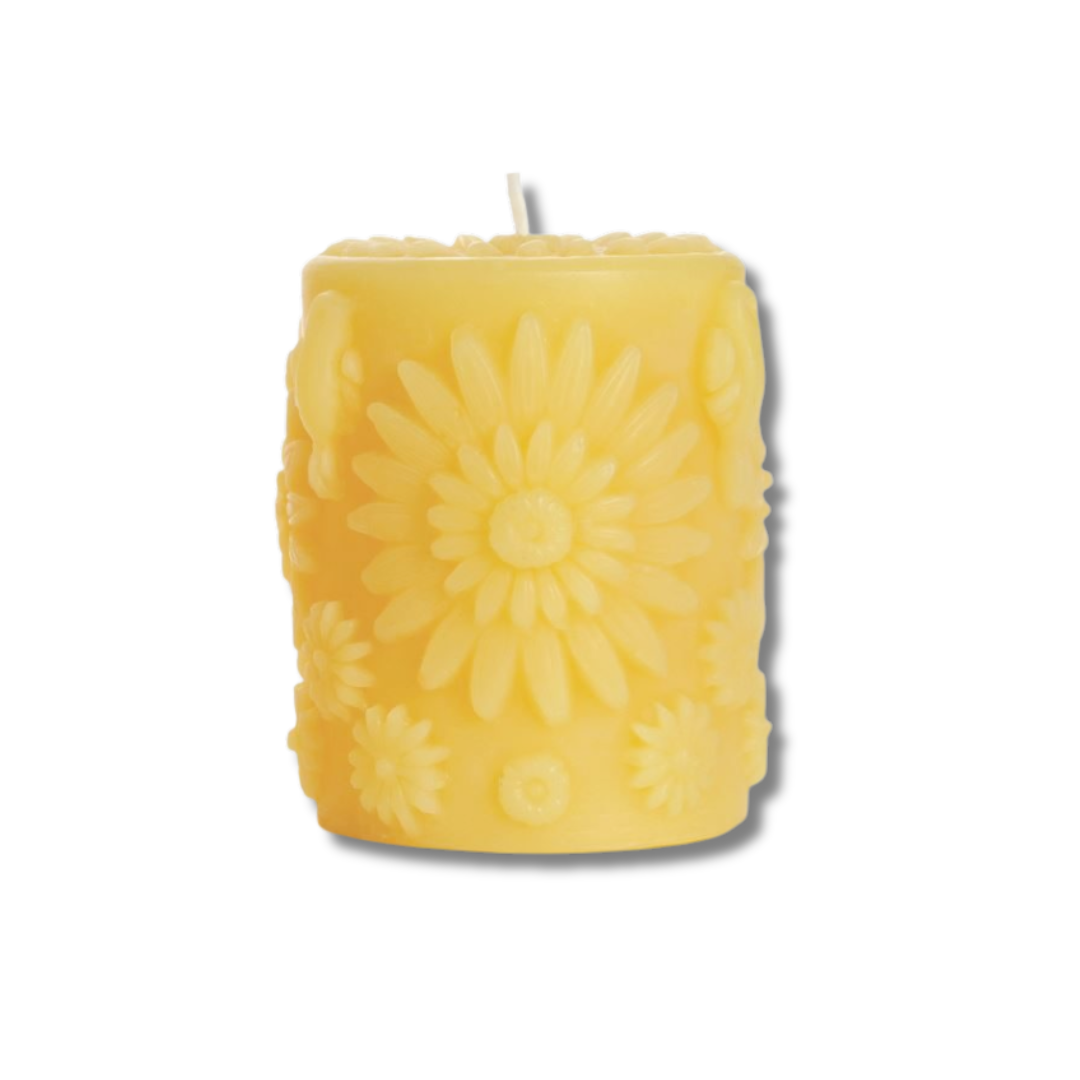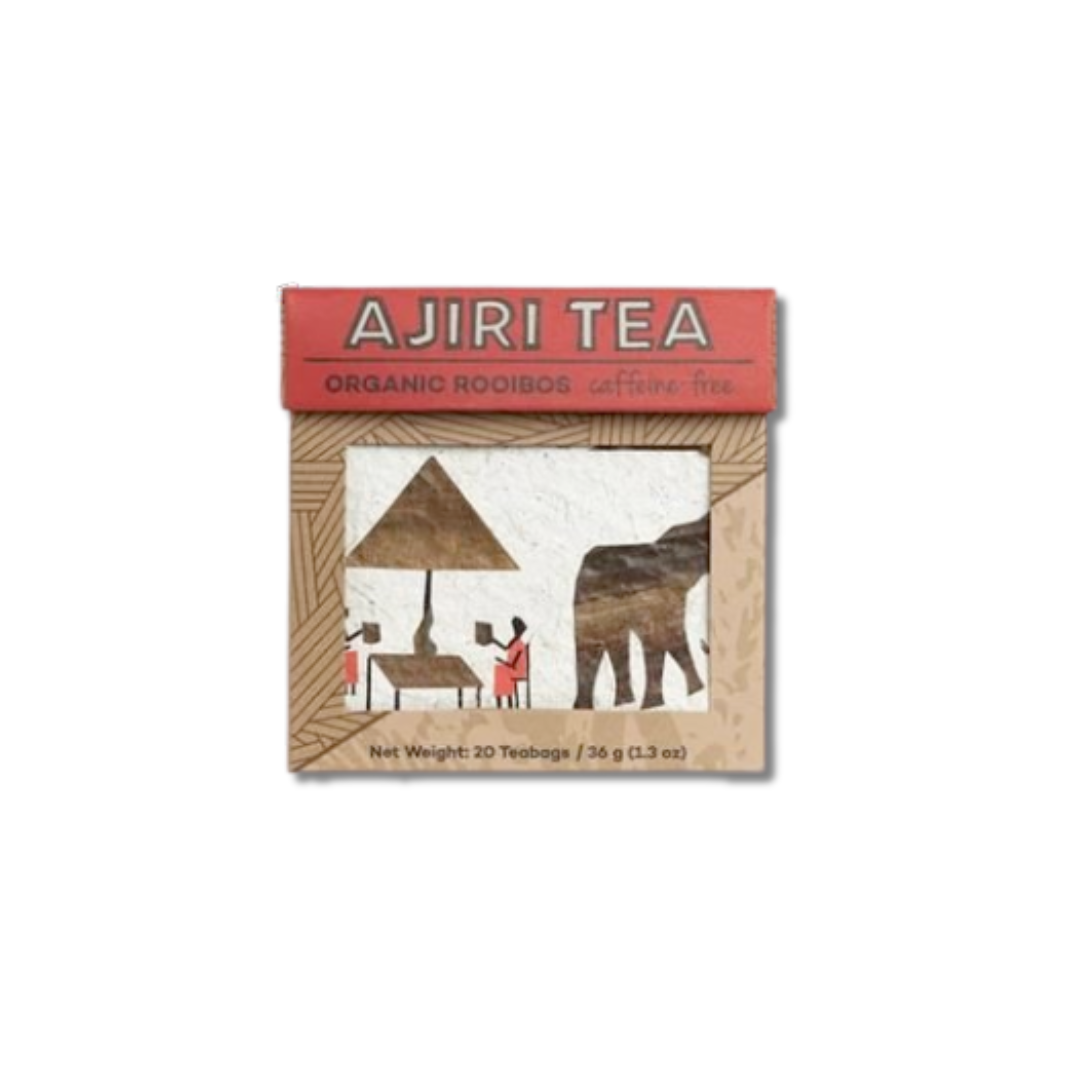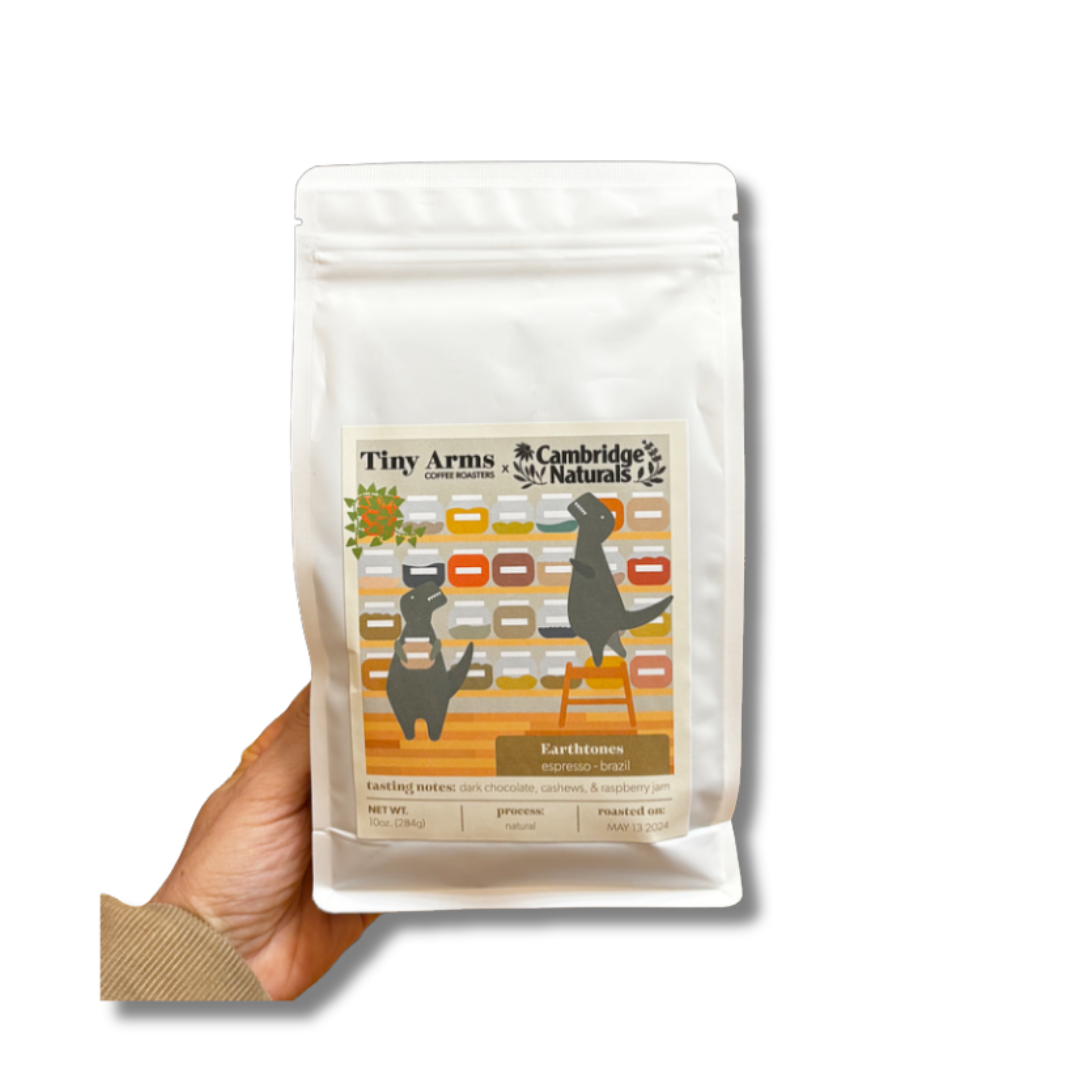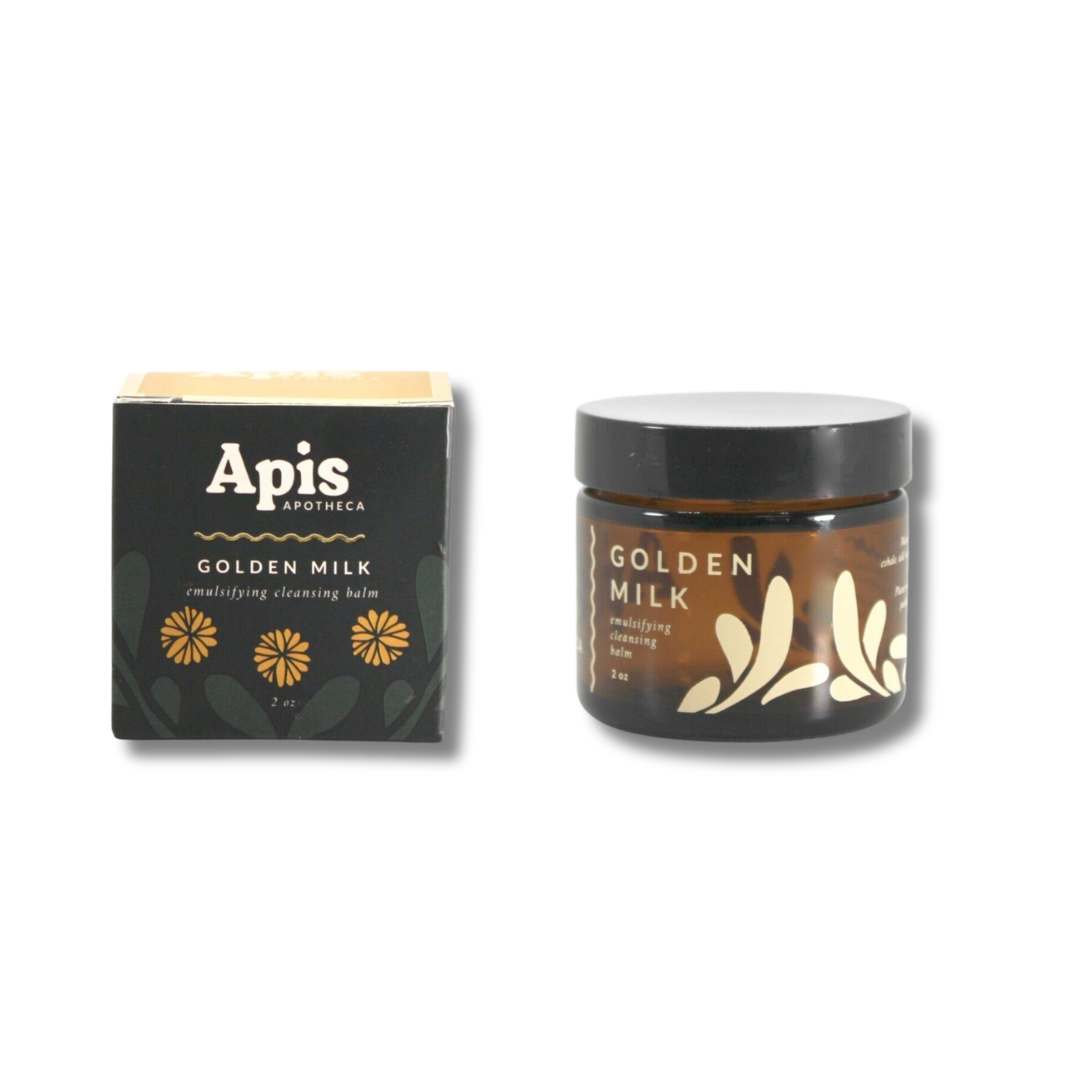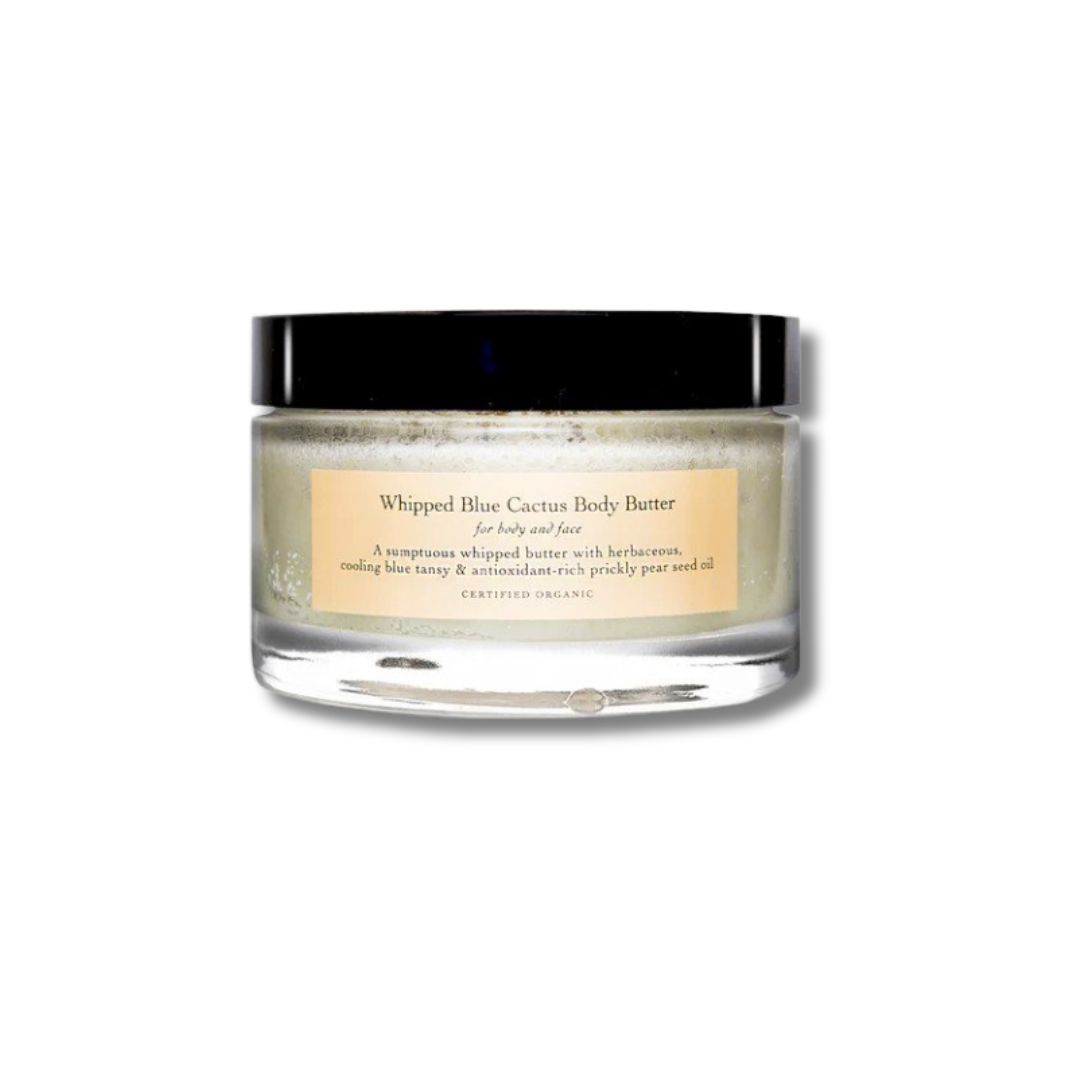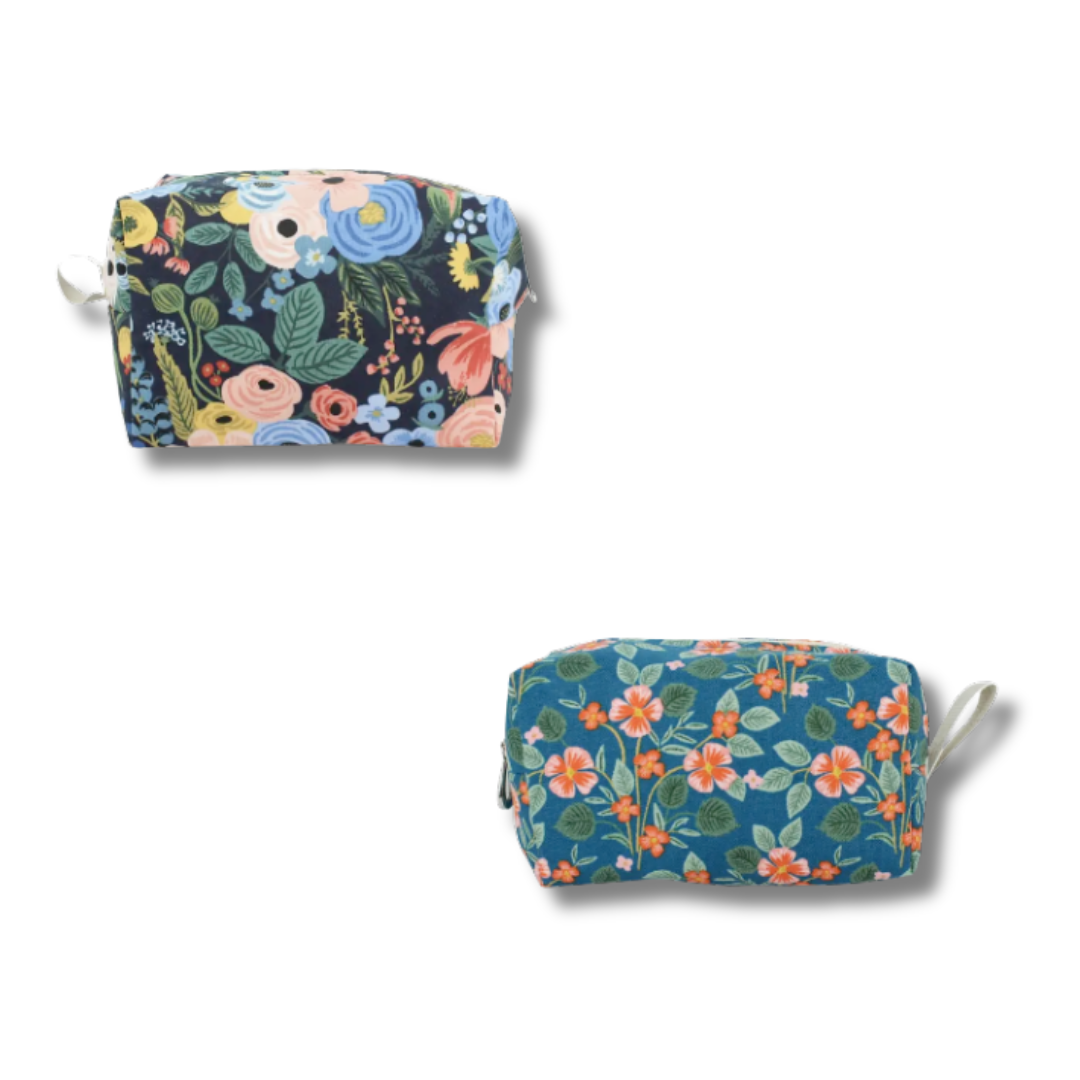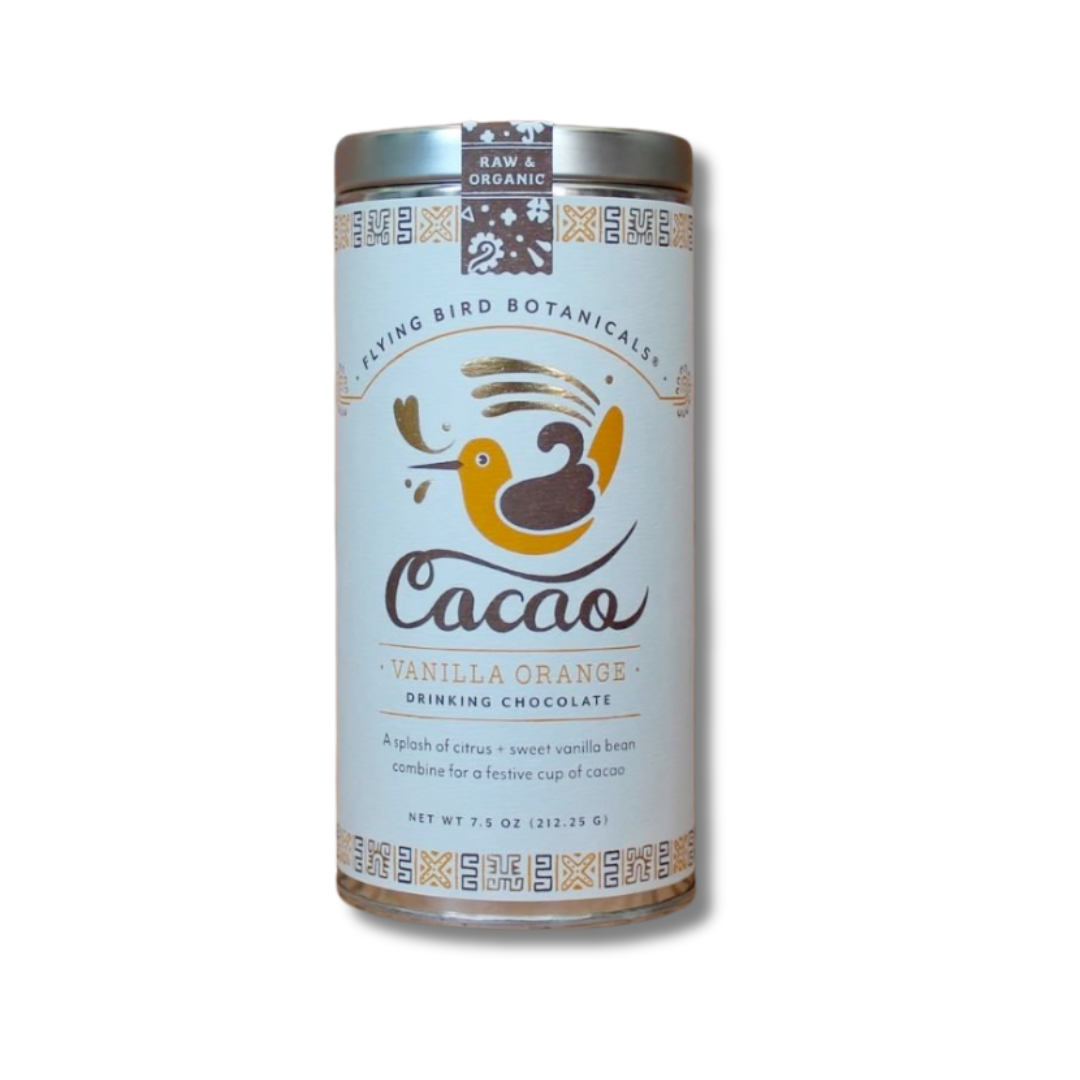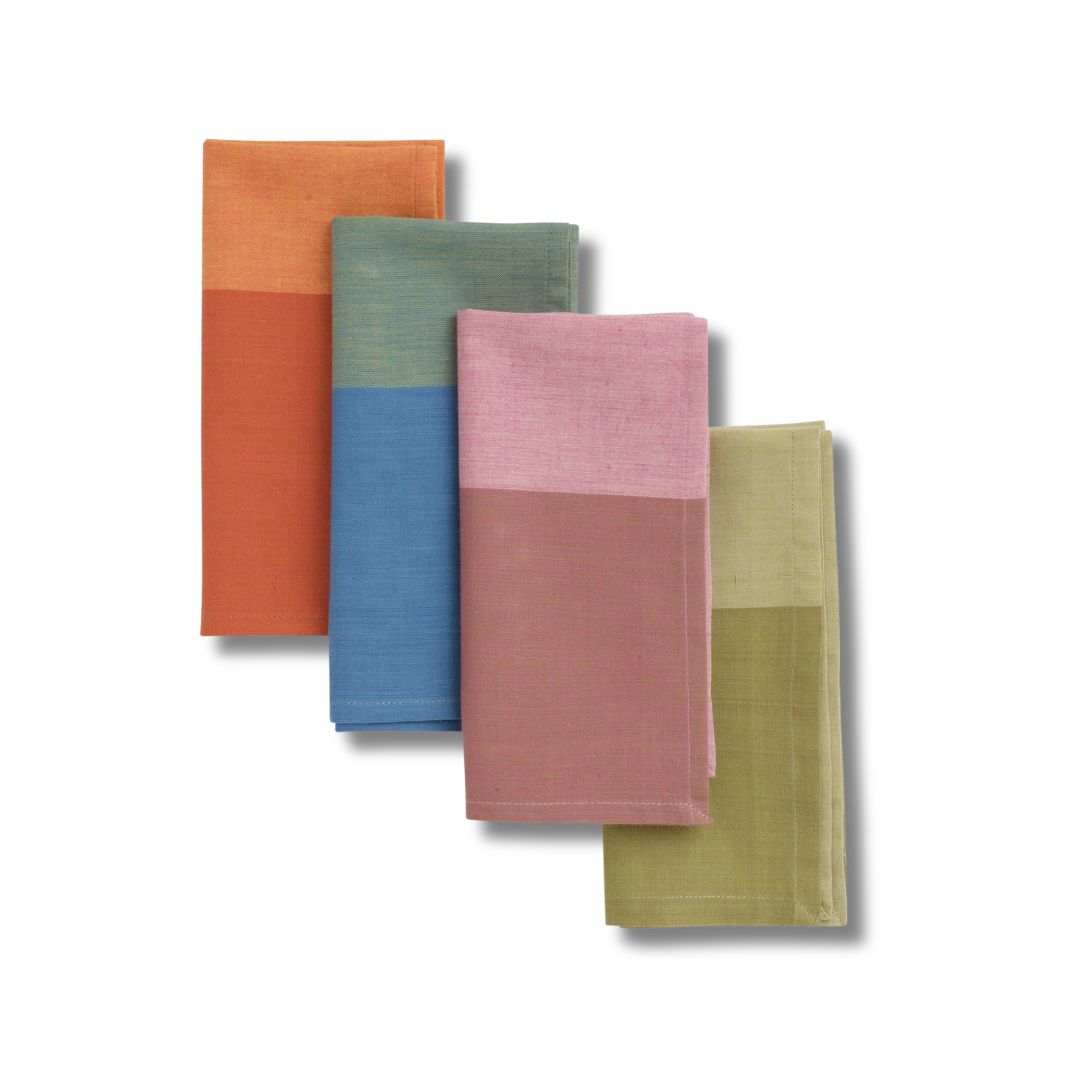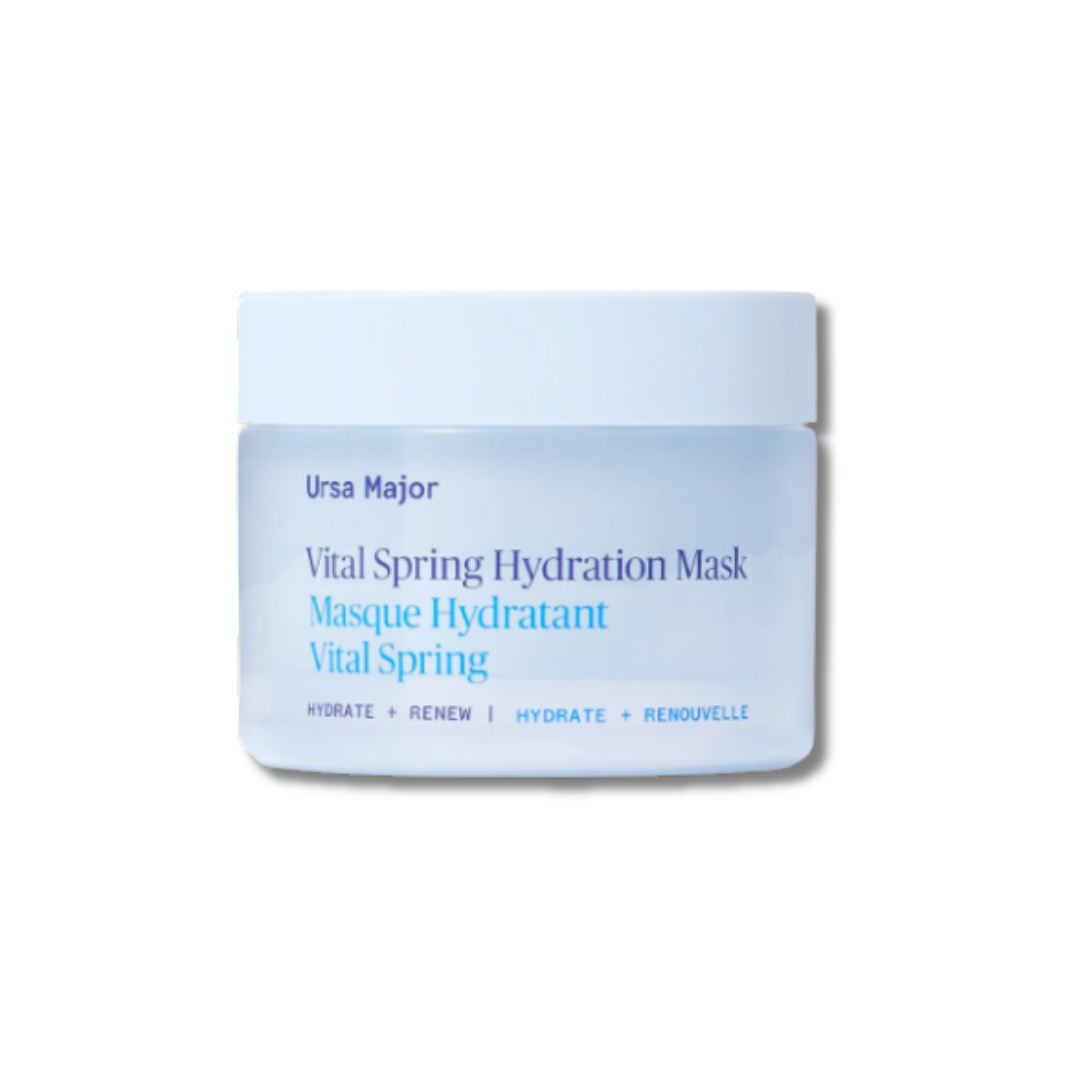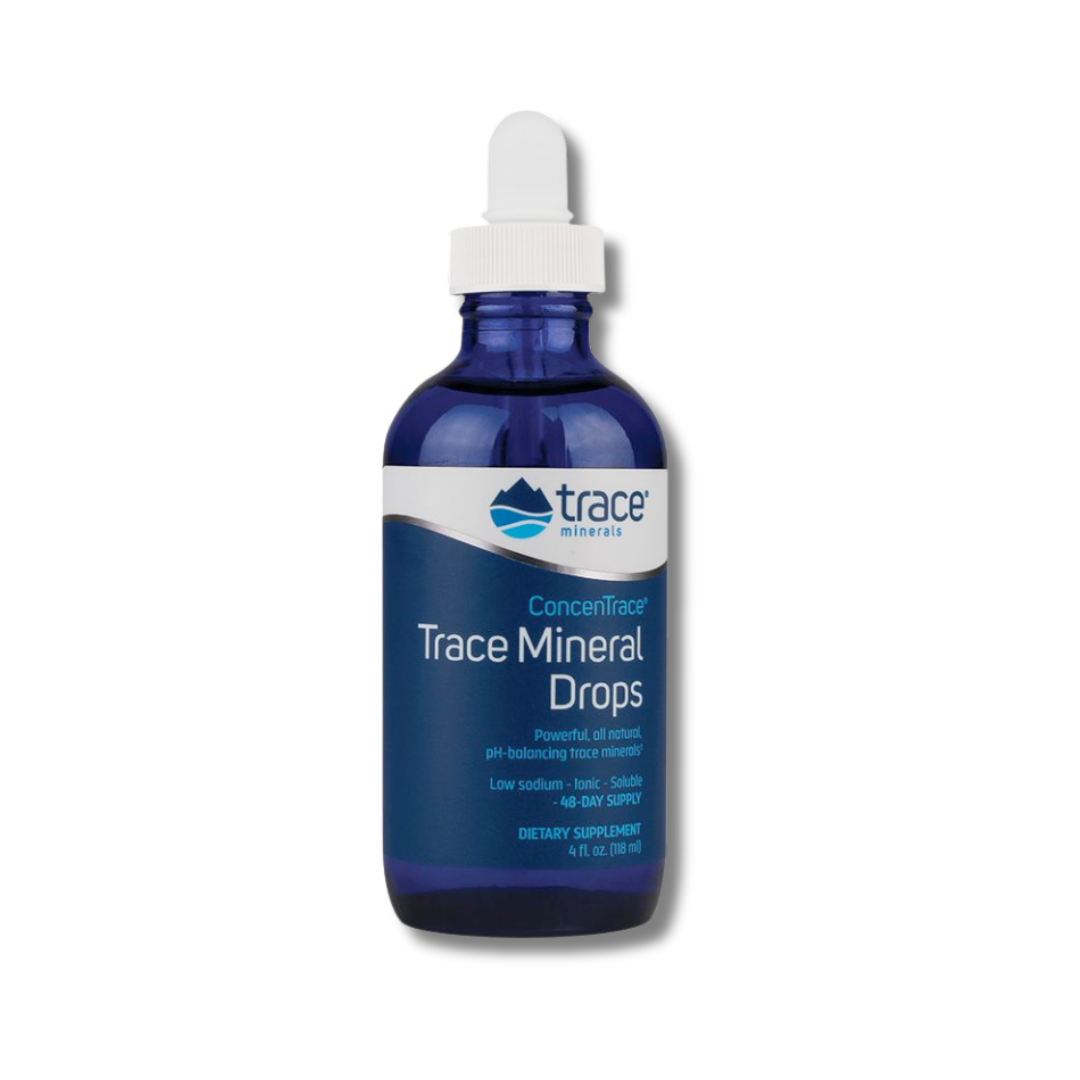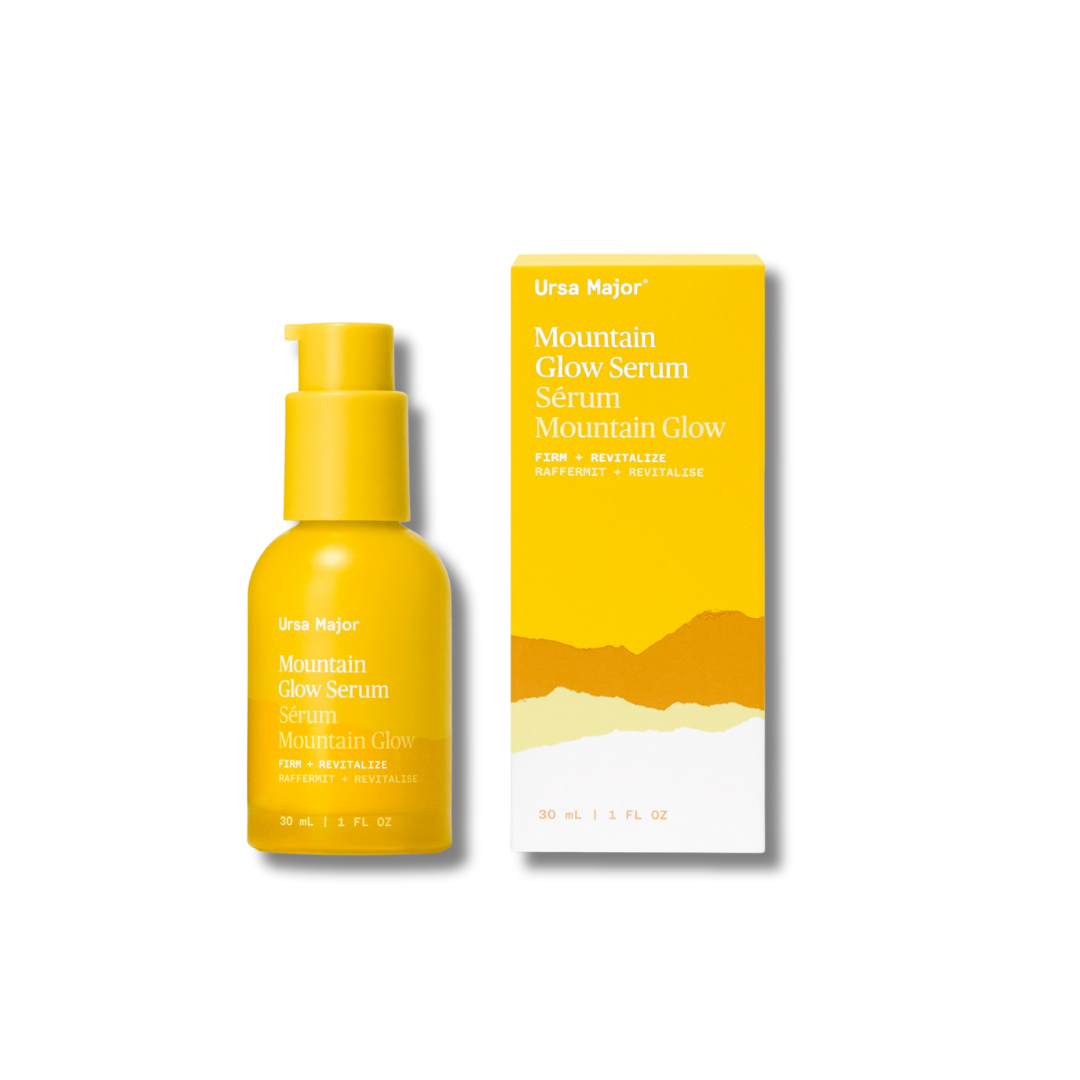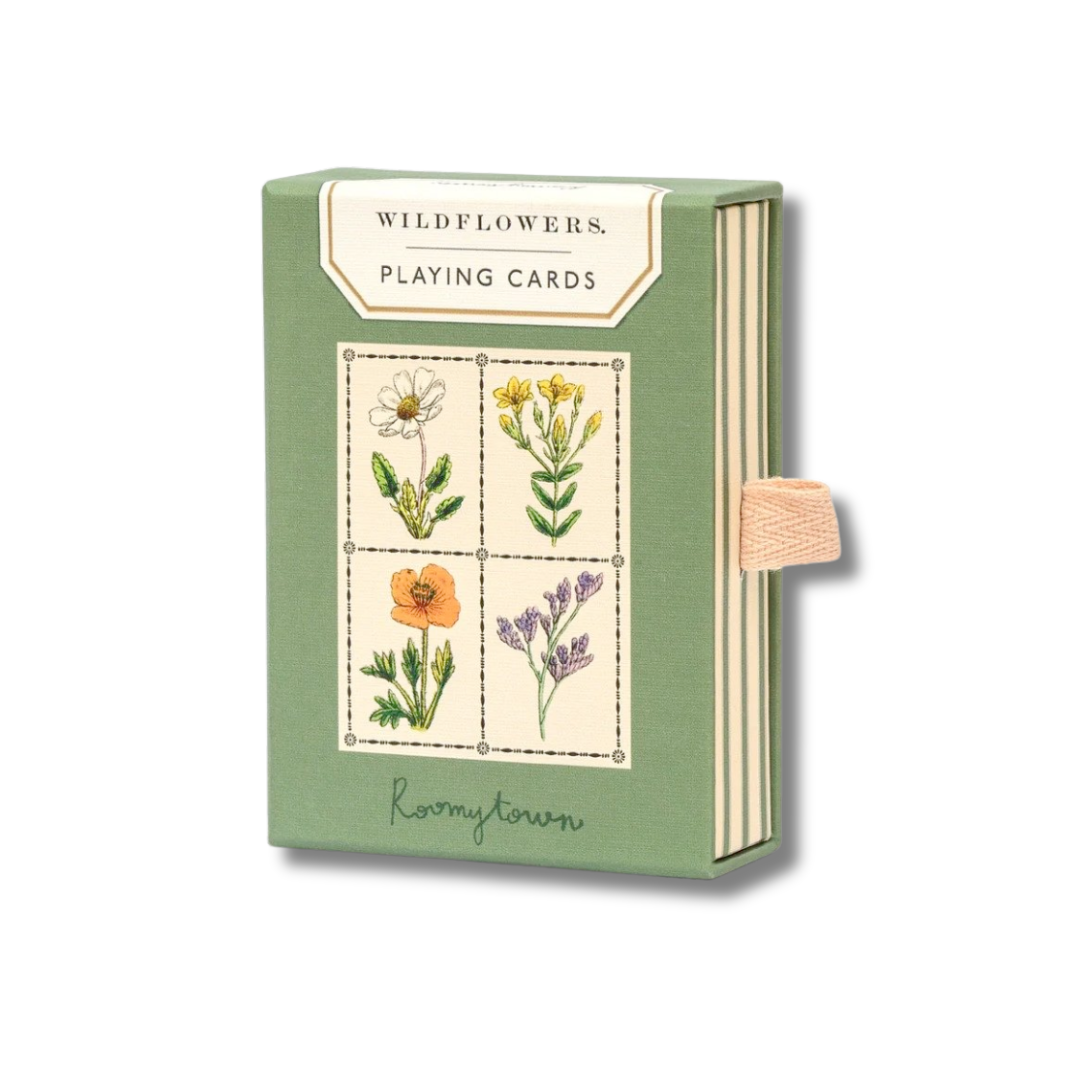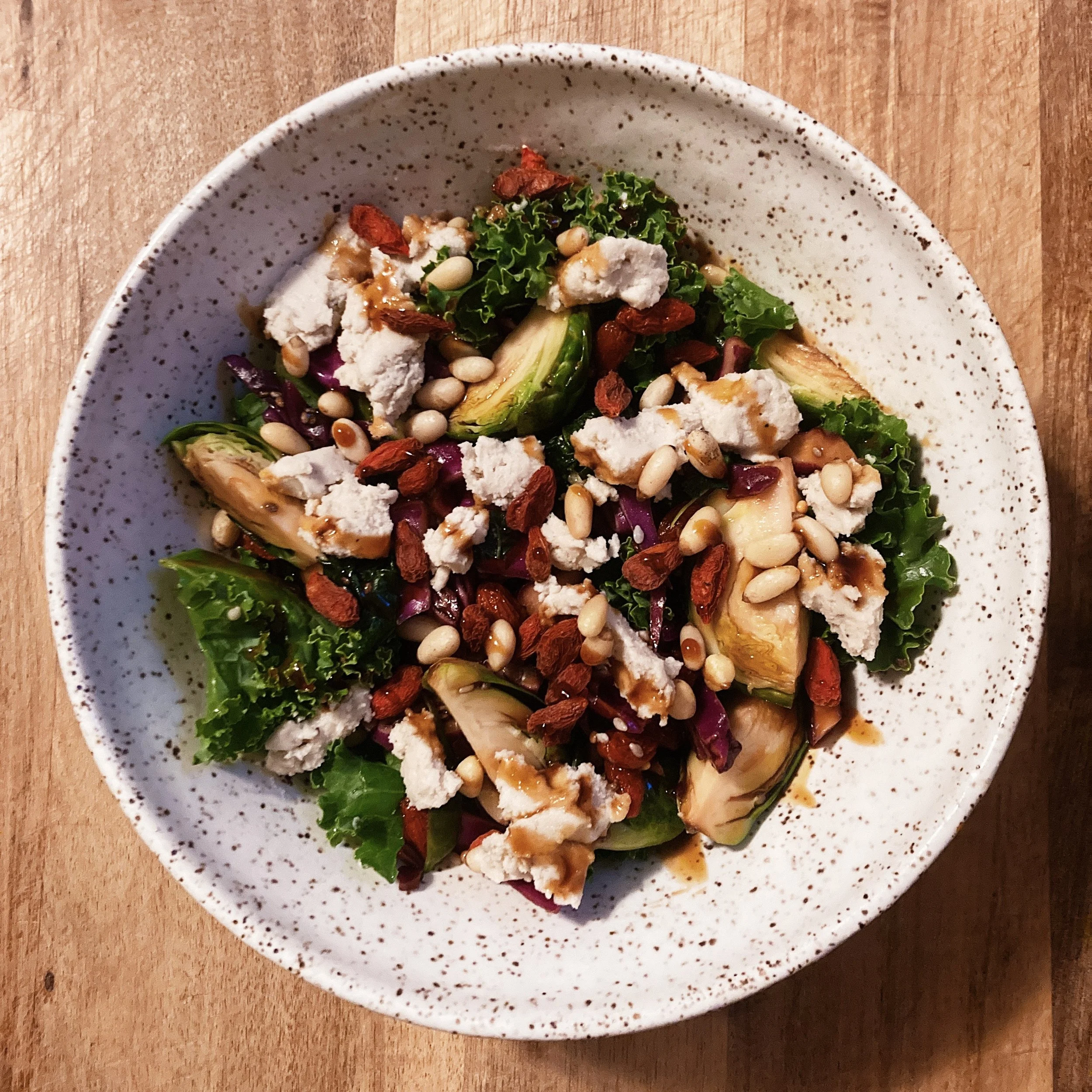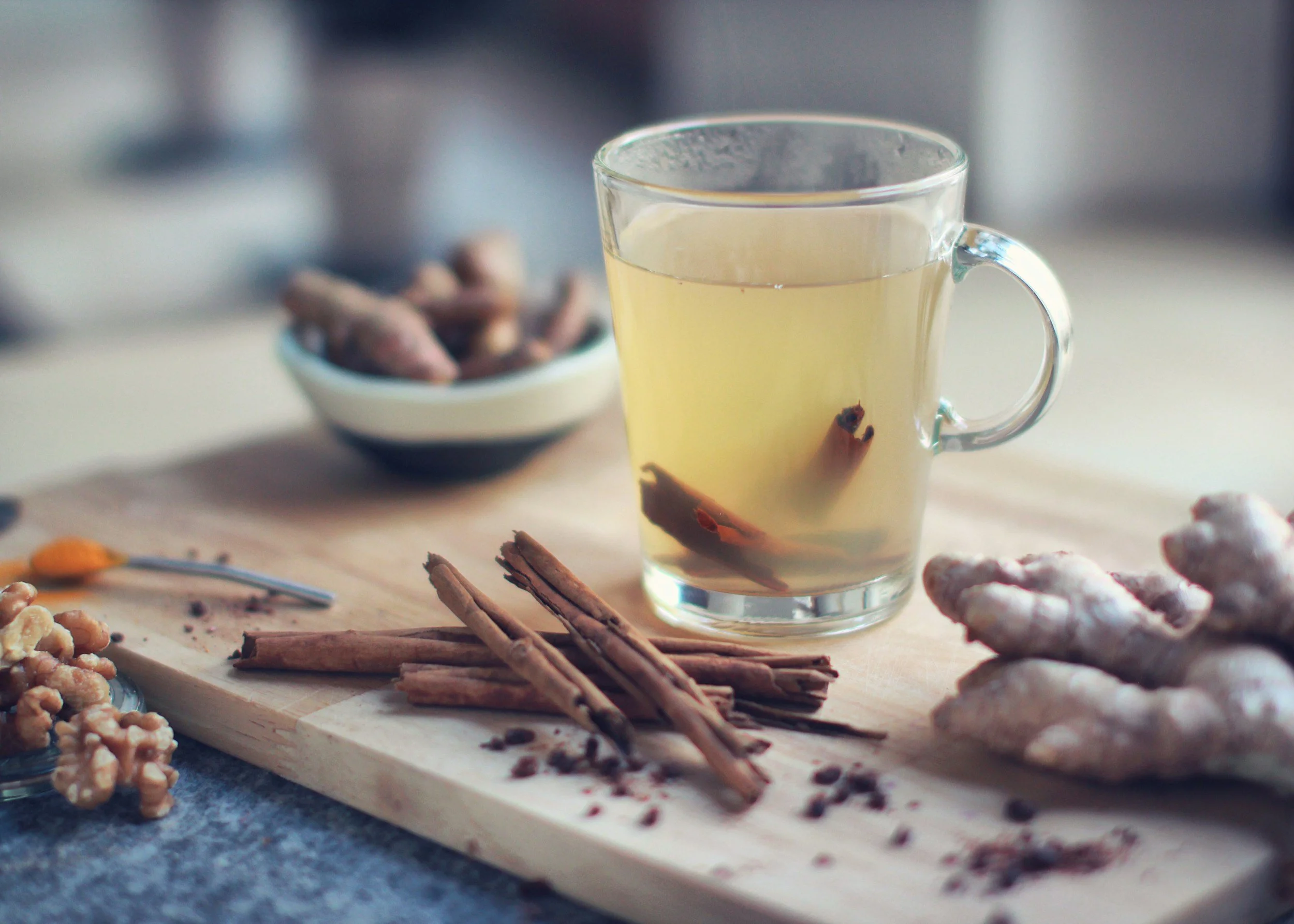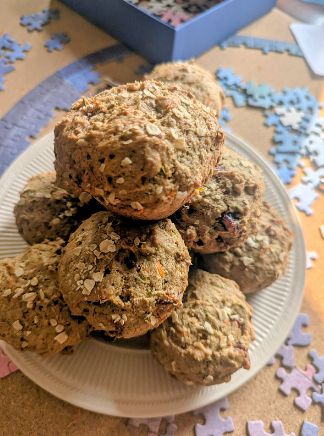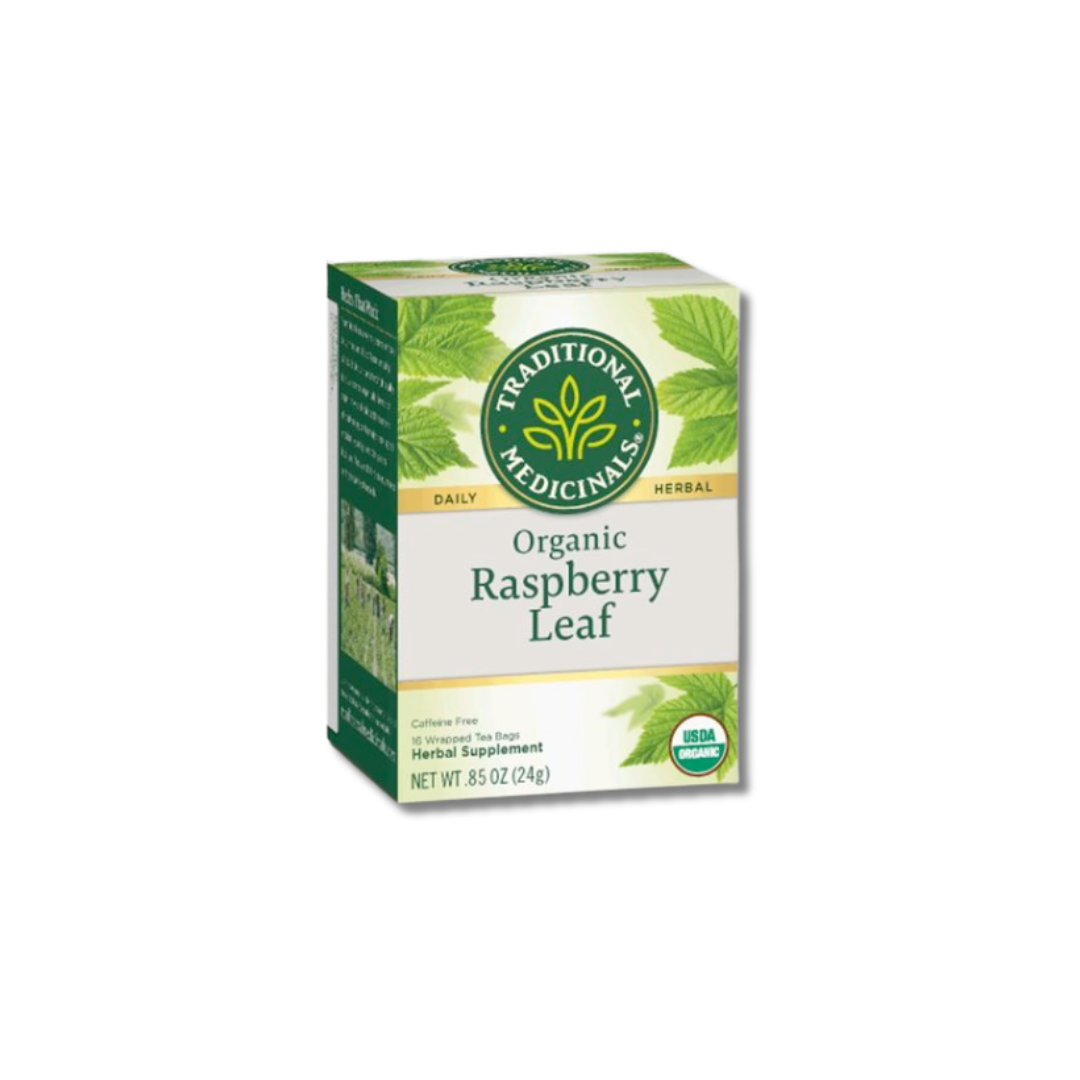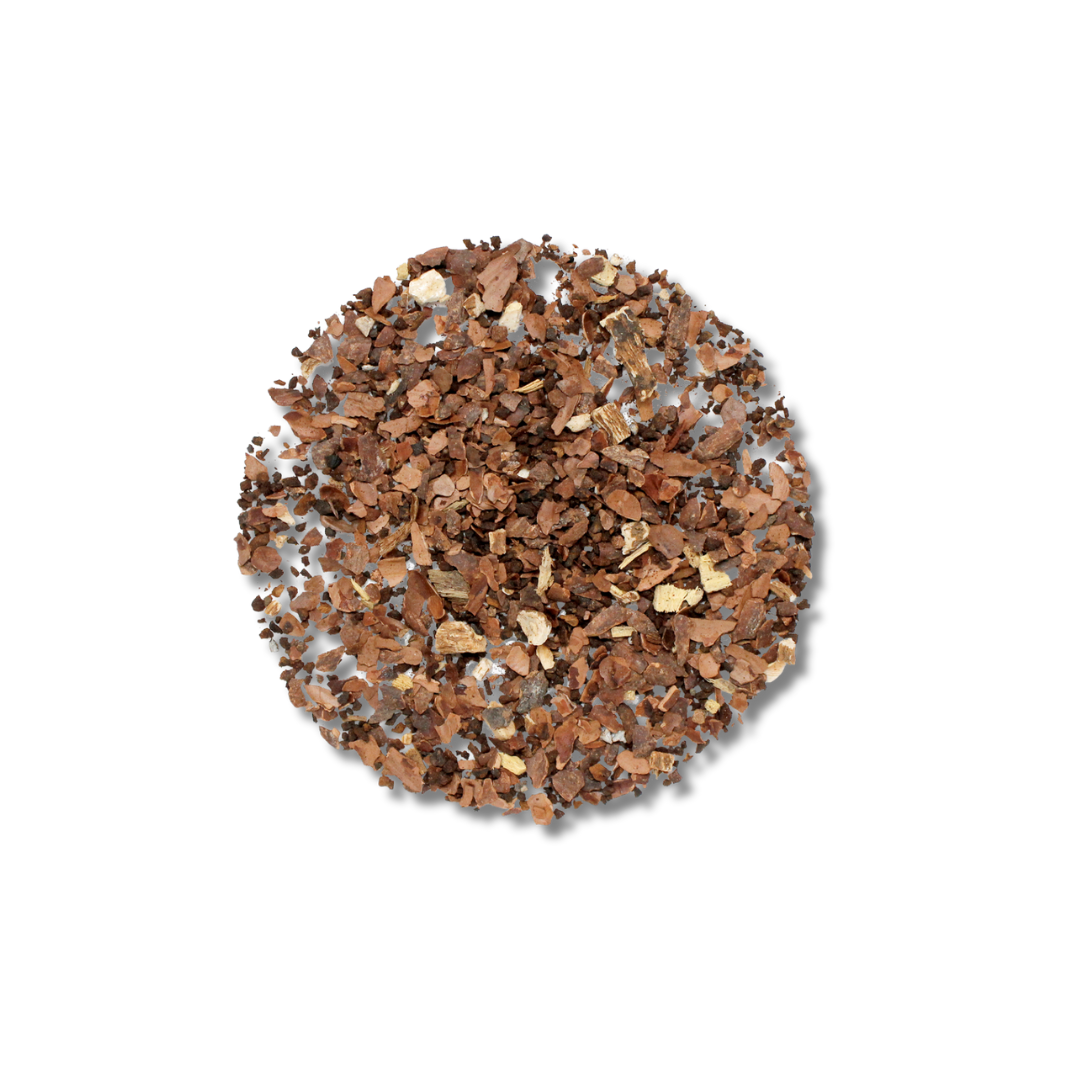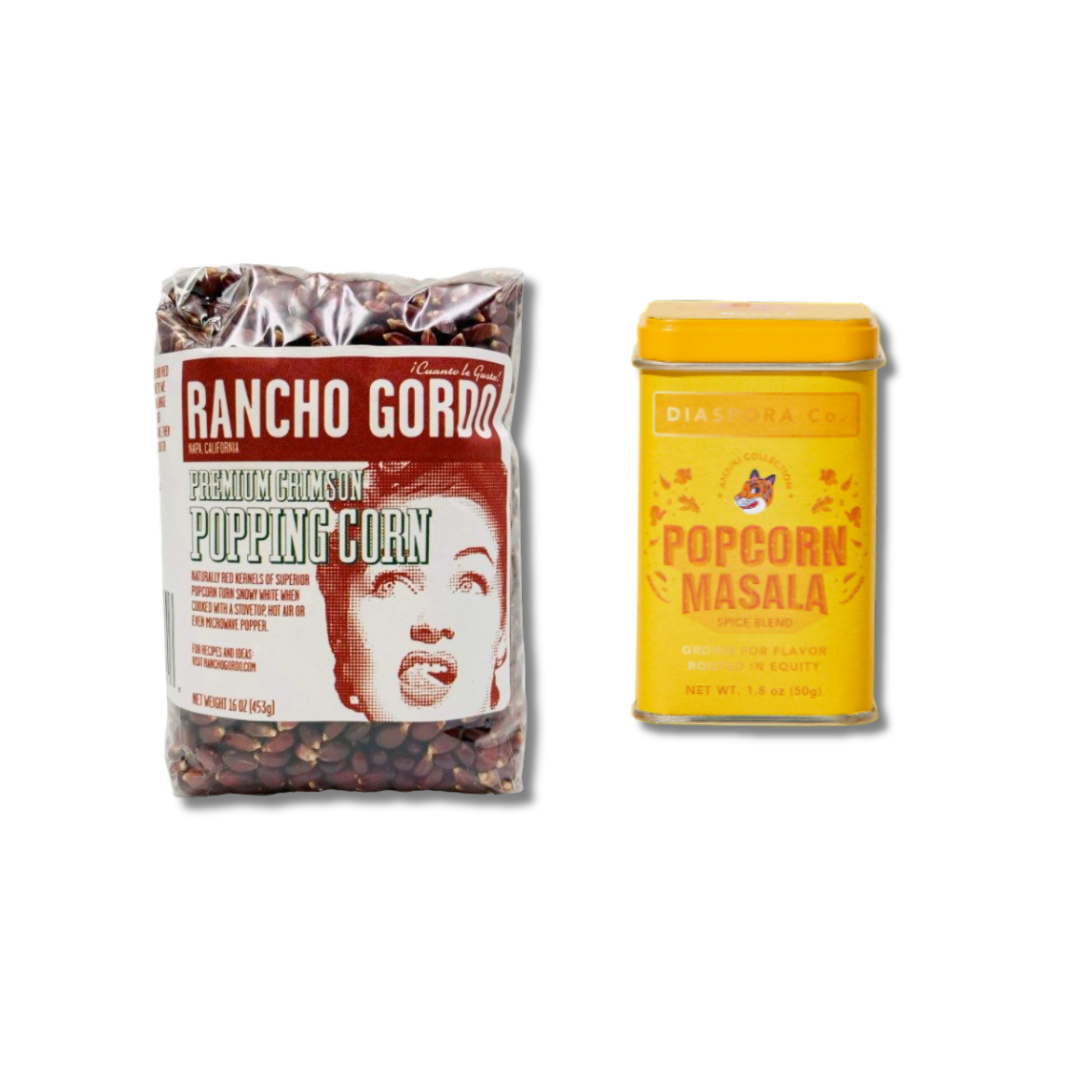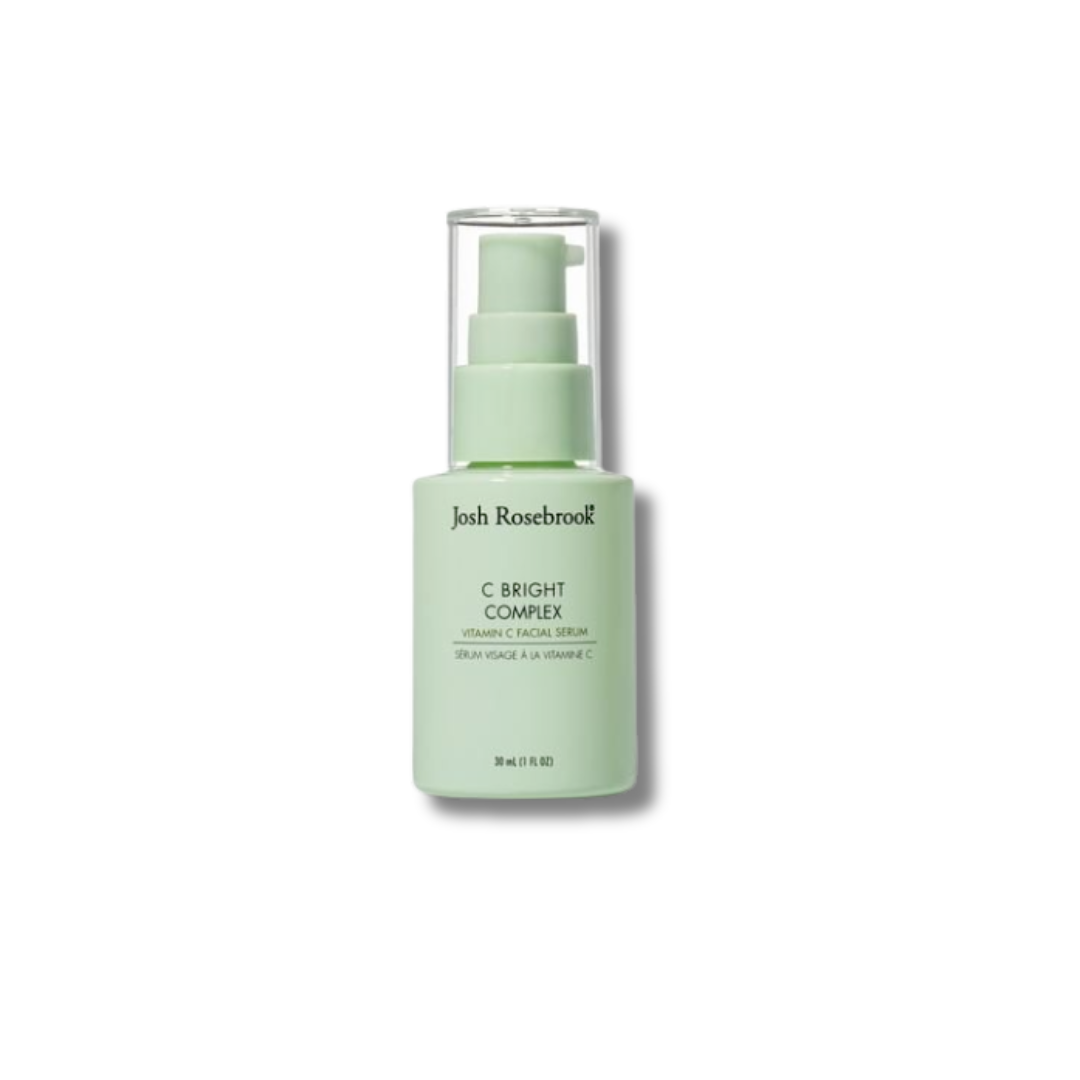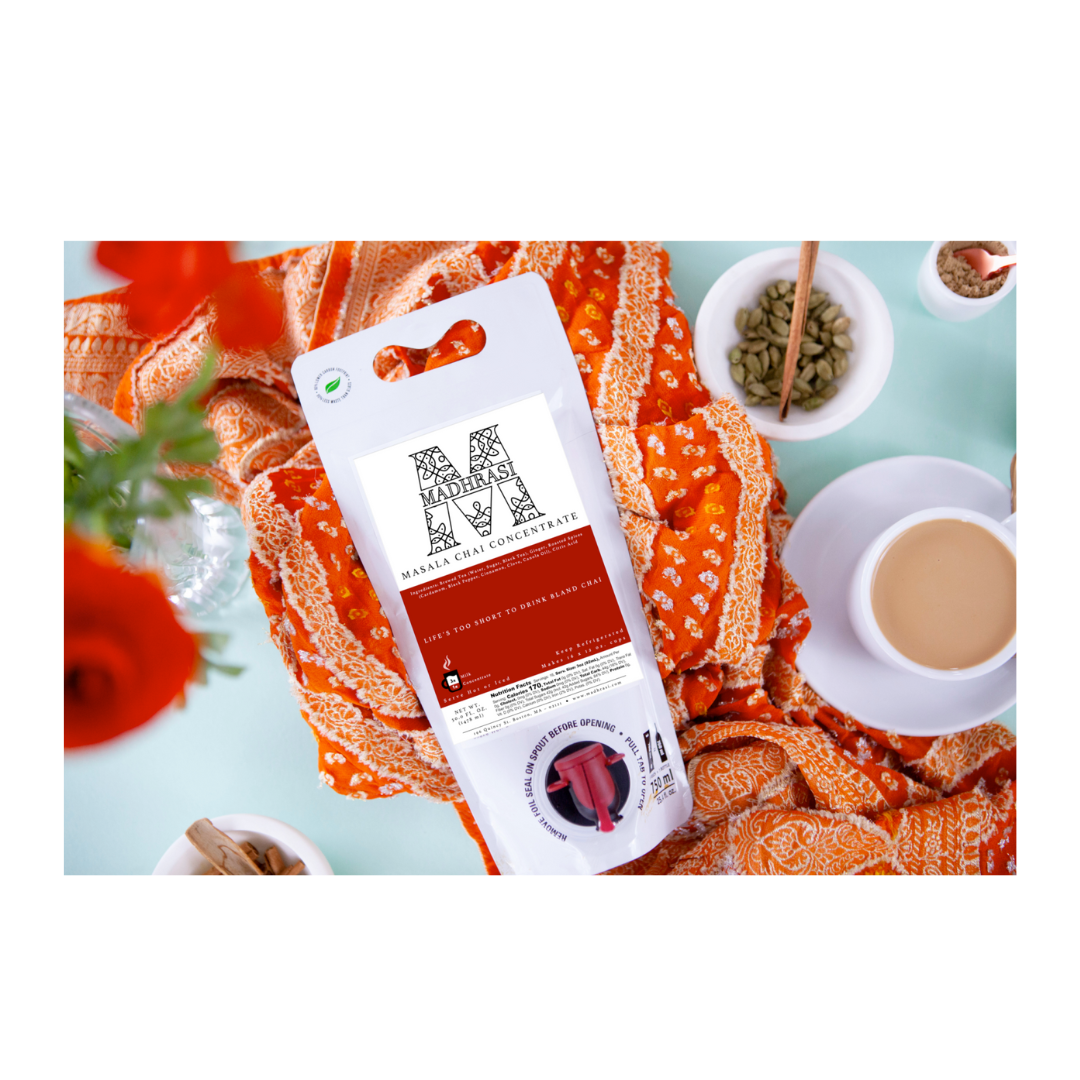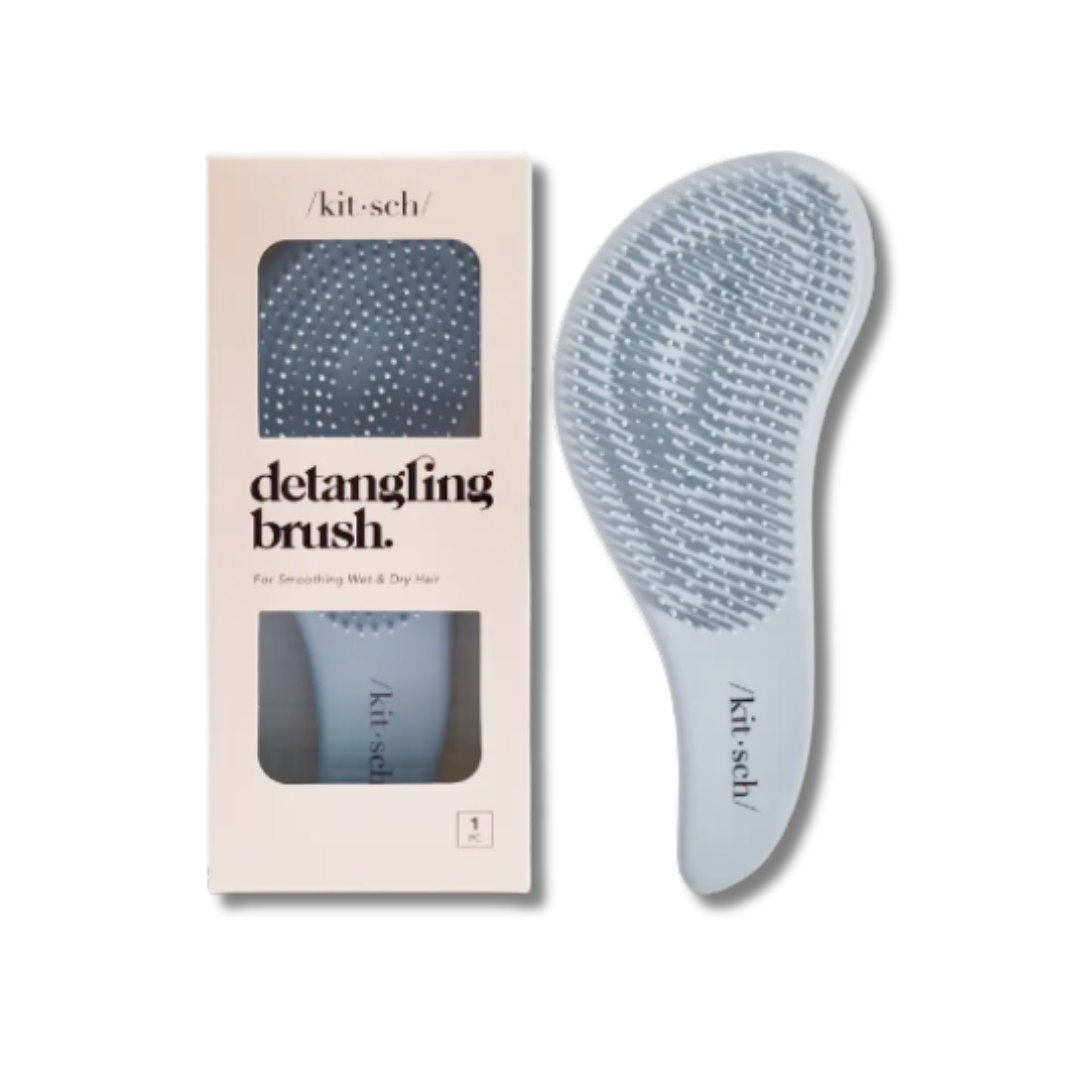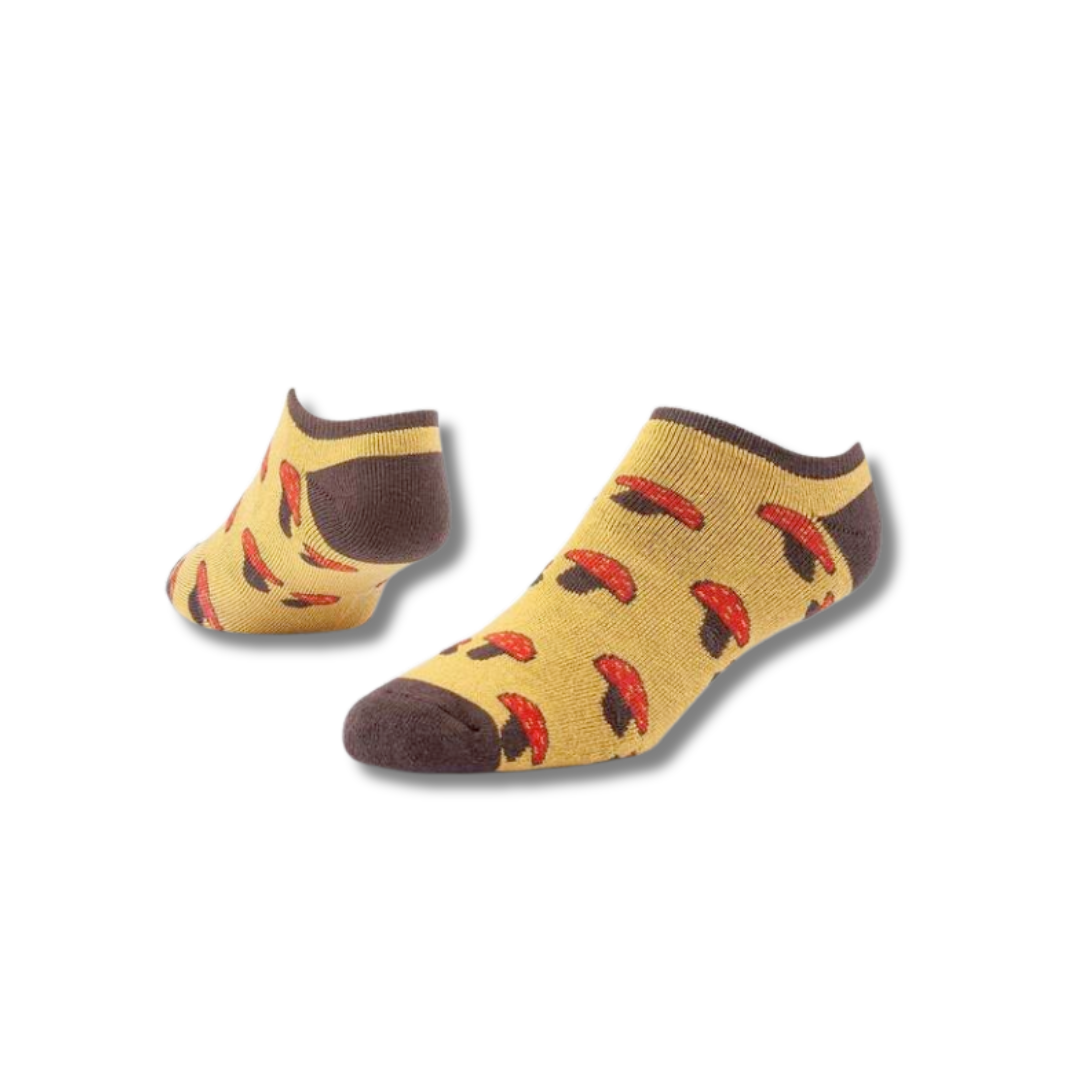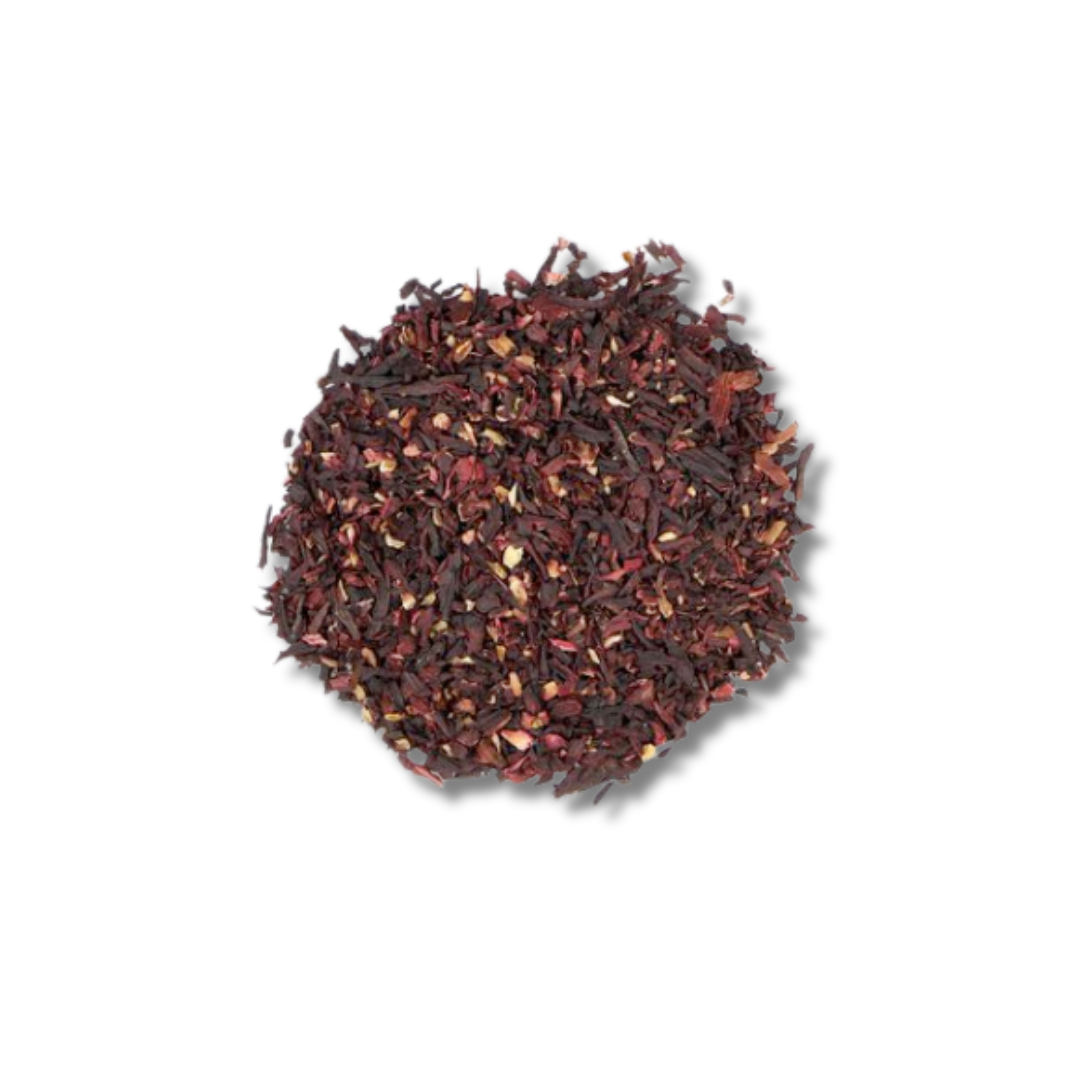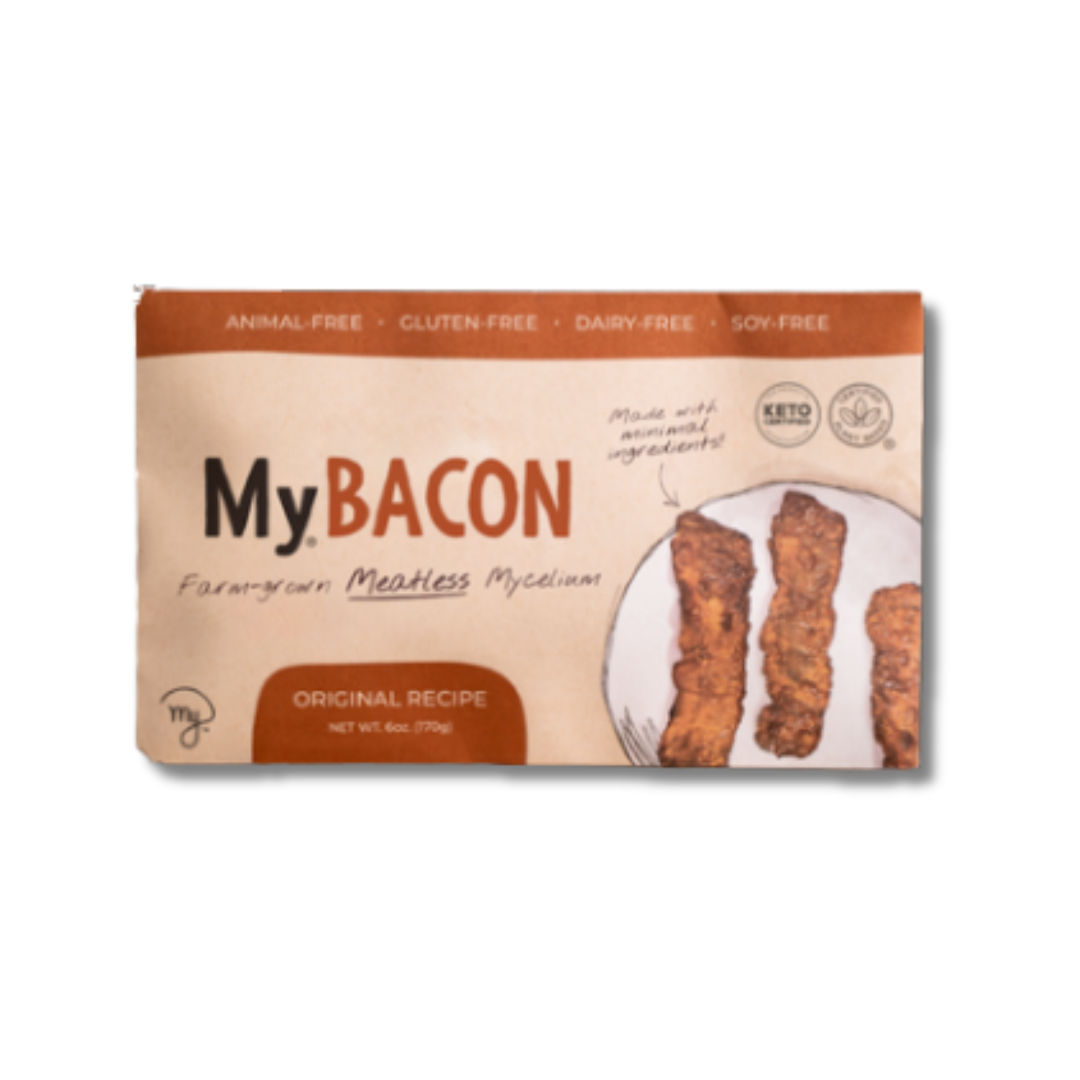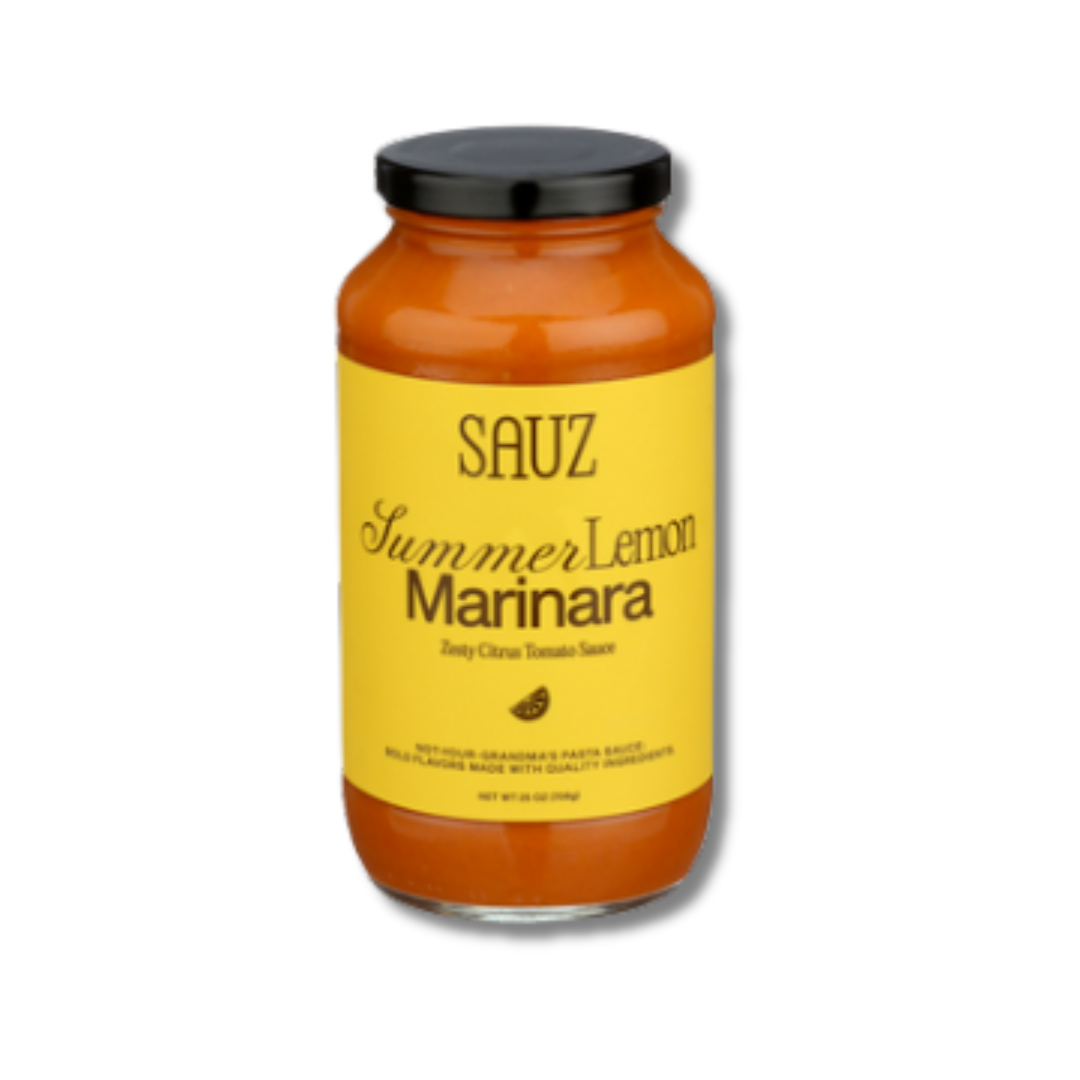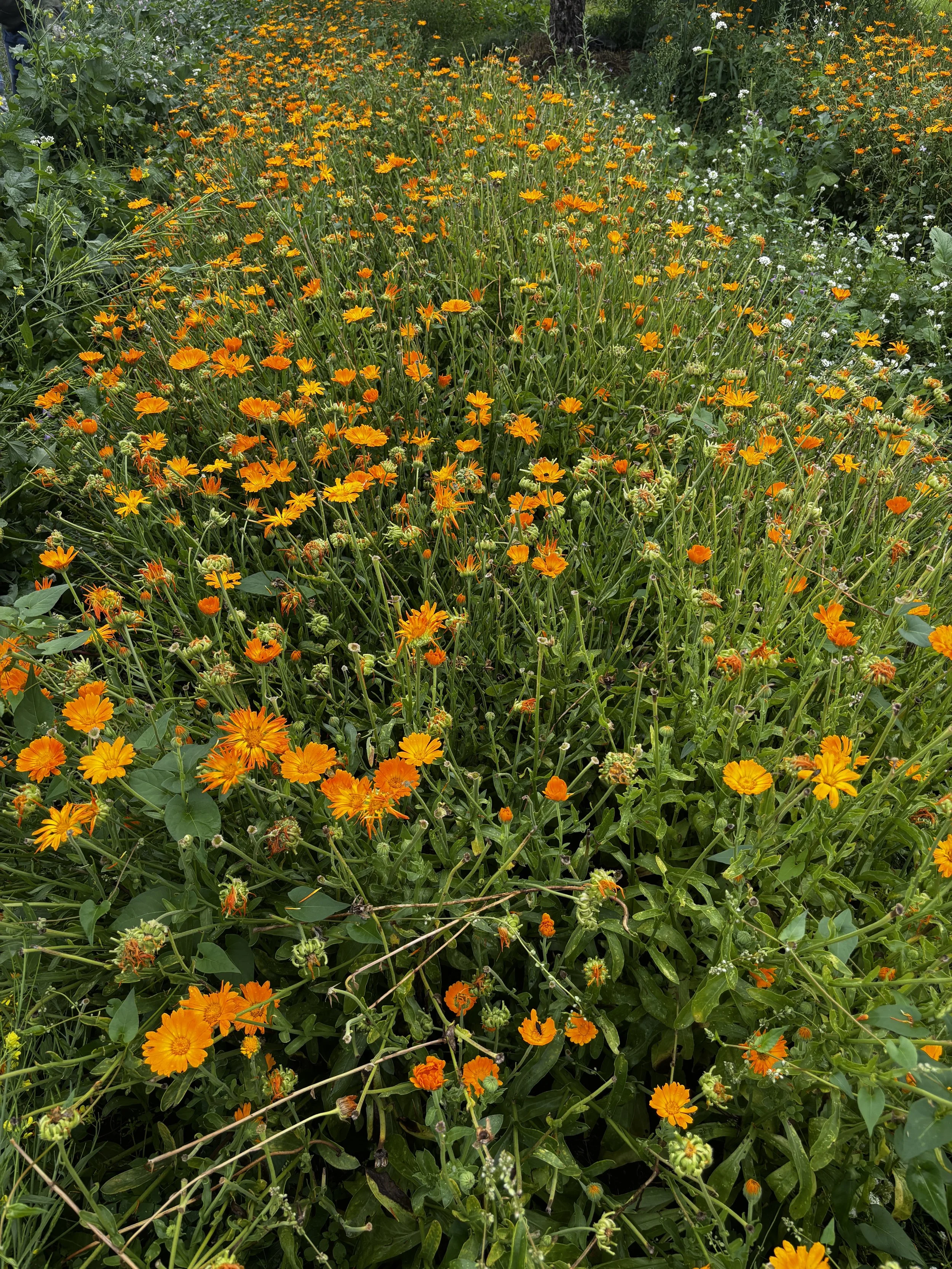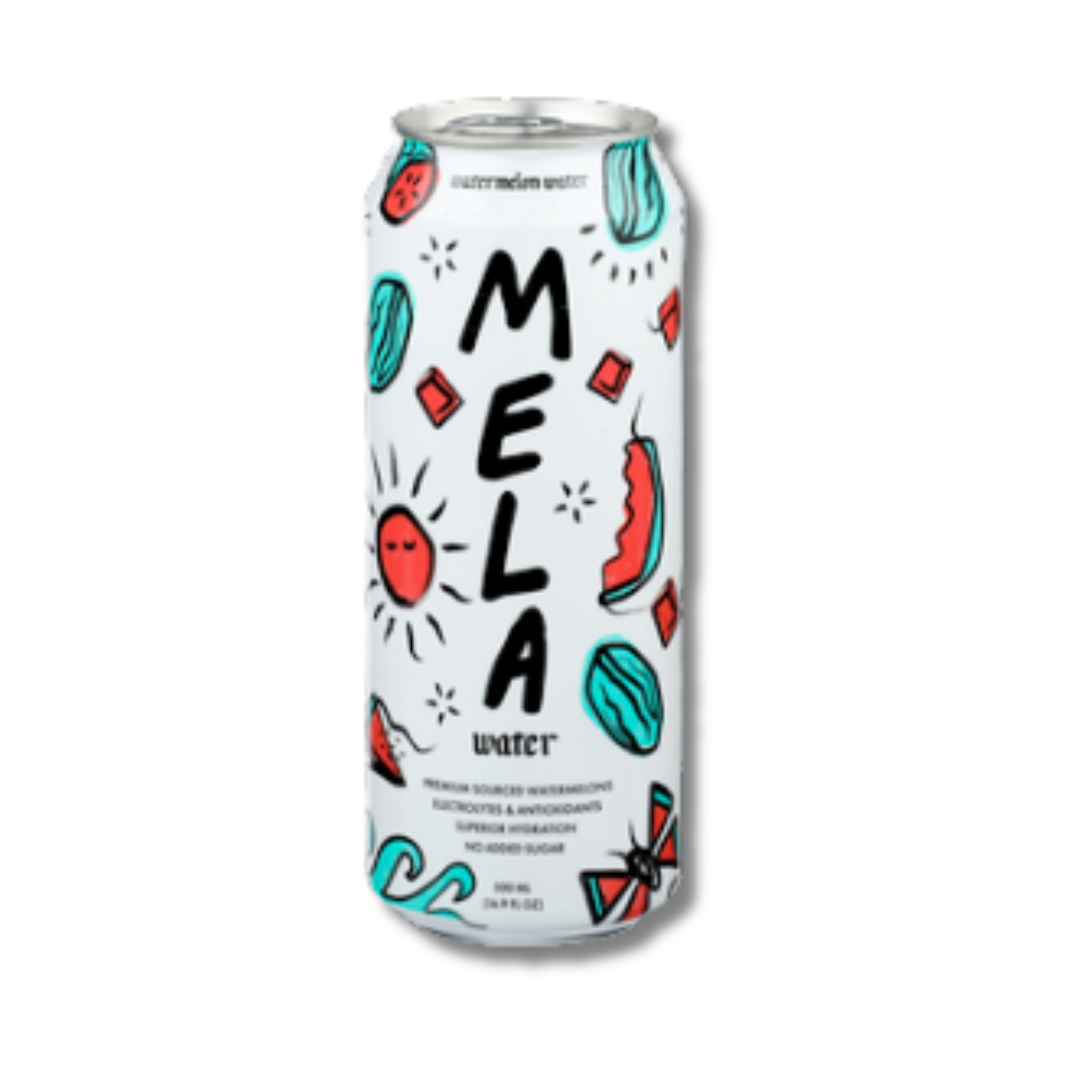
Staff Picks: Winter Wellbeing!
Zach Recommends: ESW Face Masks
Self-care can look like a lot of things - being in community, eating nourishing food, and rest to name a few. A big part of my self-care is being intentional in making time to care for my body. These ESW brand sheet masks are a wonderful ritual for me - with different active ingredients and scents they replenish dry winter skin.
Ellie Recommends: Terracotta Eczema Body Butter - Yuzu Blossom + Hinoki
Need help soothing irritated skin during the cold and dry winter months? Terracotta's eczema soothing body butter might be just the thing you need. It has worked wonders to hydrate my skin and build up a barrier so I don't need to moisturize again as soon. Give it a try!
Caleb Recommends: Cambridge Naturals Brand Ginger Zinger
Cambridge Naturals Ginger Zinger is one of my go-to, always have at home, winter remedies. Mix a table spoon in hot water and you have a soothing, warming drink to support immunity and digestion.
Rose Recommends: Weleda Skin Food Body Butter
I love all of the Weleda Skin Food products and in the winter I turn to Weleda's body butter to help my skin stay hydrated. Even though it's thick, it's non-greasy and goes on smoothly. I find that it's especially effective after a bath or shower to help lock in moisture. The thing I most love about it though is its scent. It has these delicious citrusy and earthy notes, and while it's not cloying at all, it does subtly linger and it makes me feel like I'm in an orchard or a garden, even though in reality I'm hiding under the blankets trying to escape from the cold. The scent is hard to explain- you'll just have to come in and try it for yourself!
Ellen Recommends: Urban Pharm - Blueberry and Basil Shrub 200ml
If you're looking for your next "Dry January" N/A bev, make sure to check out Urban Pharm's Wild Blueberry & Basil Shrub! It's made from raw apple cider vinegar, honey, wild blueberries and basil... so delicious! Gut friendly and packed with flavor, you'll find yourself repurchasing every other week or so. The best part? It's locally made and woman-owned. Just mix with sparkling water of your choice and voilà! The it girl mocktail of 2026. Cheers!
Emily Recommends: Cambridge Naturals Brand Astragalus Tincture
I made the silly mistake this winter of temporarily forgetting that this is my all-time favorite herbal extract, and got hit with pesky seasonal illnesses twice in short succession. But hey, new year, new opportunities abound to recommit to my daily dose. This adaptogenic Traditional Chinese Medicine herb is a powerhouse for immune support! A little bit in warm water every morning is my go-to remedy for keeping the sneezes at bay. New year, less sniffly me!
Rachel Recommends: Wild Carrot Herbals - Vanilla Bean Luscious Face Cream
Wild Carrot is a new-to-us skincare brand, and I've been loving the aptly-named Luscious Face Cream. It has both vanilla flower and tonka bean extracts, which along with cocoa seed butter give it a rich, light scent that matches the texture. This cream is almost like a hot chocolate hug for your face, and absorbs so nicely, leaving you soft and moisturized. If you're looking for face care that can withstand the winter and keep your skin nourished and cozy, try this!
Laura Recommends: Big Dipper Celebration Tapers and Danica Unscented Tapers
What better way to survive a New England Winter than to romanticize it! In order to do so, I am burning through taper candles like crazy this season... literally. Lately, I am particularly in love with the Danica 9" tapers which come in a vibrant variety of colors and burn for 7.5 hrs (at a very affordable price point while still utilizing premium waxes). I also adore the endearingly stout 5" 10 pack of beeswax tapers from Big Dipper. These burn for 5 hours each and naturally have a honey like aroma. Join me in cozy contemplation!!
Ashley Recommends: Rest Deck by Tricia Hersey
Rest is radical. If you are looking to change up your current routine, make bite size changes, or are a collector of all things mindful -- te Rest Deck is one to consider in you grounding and mindful practices. The cards are beautiful, easy to digest, and a pleasure to use. We are not determine by our productivity. No matter what you envision for yourself, in this season of change, remember to rest.
Nini Recommends: Ghia Le Spritz Lime & Salt
January always feels like a fresh start—the perfect time to build new habits with a mix of excitement and determination. One of my goals this year is to cut back on drinking, but wow, the ubiquitous social pressure can be real. That’s where Ghia swoops in with their flavorful, non‑alcoholic spritzes. You still get that satisfying crack of opening a can and all the fun, familiar flavors—just without the alcohol.
My go‑to is the Lime & Salt spritz. I grab a few before meeting up with friends so I can stay in the moment without compromising my goals or my health. I even bring extras now because a bunch of my friends are on the same path and love trying out new flavors!
Robin Recommends: Ethical Global Dryer Balls
I'm new to dryer balls, and I love them. They are colorful and fun, they help cut down on static (no more dryer sheets, thank you), sustainable, and really fluff up my towels and clothing. Besides, what's better than pulling a clean load of laundry from a warm dryer on a cold winter's day?
Sarah Recommends: Nopalera Perfume Sprays
In the dreary winter season, I find fragrance to be a simple way to lift my spirits. Nopalera makes it impossible to choose a favorite between their three perfume sprays. Luckily, their travel sizes mean you don't have to! Inspired my the Mexican landscape, Nopalera has a fragrance for everyone. Earthy, floral, fresh, light, bold - you name it there's one for you. Not a fan of spraying on your fragrance? They also make body lotions, hand lotions and body wash. I simply cannot live without them. (OK...I could live without them.... but why would I want to??)
Molly Recommends: Thulisa Naturals Eucalyptus Shower Steamers
Whether you're battling a cold or just want to make you shower feel like a fancy spa, these eucalyptus shower steamers are a versatile winter favorite. If you don't have a bathtub but still want the steamy and luxurious experience of a bath bomb, these are a great option, as you simply place the steamer on the floor of your shower and allow the water to release the aromatic steam. These aromatherapy steamers are made with eucalyptus, peppermint and sweet orange essential oils to sooth and refresh. They also make a great gift!
Amber Recommends: Marin Tinted Lip Treatment - Cranberry
My bike is my only method of transportation, and it can get unpleasant in winter weather. Marin's lip treatment is made with marine glycoproteins (a natural byproduct of Maine's lobster industry), and it's one of the only products I've found that helps heal my chapped, wind-burned lips. I'd also like to give a shoutout to the brand for actually using models with eczema in their advertising -- representation matters!
Dev Recommends: Olbas Aromatherapy & Massage Oil
~Easy breathe-y dutiful Olbas Oil~ But in all seriousness, Olbas oil and Olbas products in general are among my respiratory support heroes during the long, dry, congested months of winter. It's versatile enough to use as a soothing inhalant, massage oil, or in a humidifier compatible with essential oils. Your lungs and muscles will thank you! (A variation of the oil is also available in a convenient travel inhaler form!)
Sara Recommends: Host Defense Breathe Respiratory Support
If you are prone to respiratory issues during these dry winter months I highly recommend this tincture on a daily basis. Taken daily, this blend of functional mushrooms helps support immune function and lung health.
Mike Recommends: Jahmu Turmeric Chocolate Chai
It's cold again. I am not a fan. But, thanks to being here, I am constantly finding new and exciting ways to fend off the slush and frozen rain and BLEH. This year? It's this delectable mix of turmeric, chocolate, and chai! The caffeine will keep me going until the sun decides to stay out past 5pm. The chocolate is a little sweet treat that I think we all enjoy during winter. The turmeric and chai? They bring everything together, and make this a delectable drink that I'll probably enjoy year round!
Allison Recommends: Urban Moonshine Immune Zoom
I'm not much of a warm beverage drinker, so I like to make myself a little immune mocktail for the long winter evenings. I layer Urban Moonshine's Immune Zoom and the Cambridge Naturals Echinacea Alcohol Free Tincture with seltzer, pour over ice and call it a night.
Tom Recommends: CV Sciences Pain Cream - +CBD 1000mg Penetrating Pain Cream
The feeling of applying this generously dosed topical CBD makes it evident why humans have used CBD for pain relief for thousands of years. Add in the plant power of menthol and camphor plus the other ingredients that are safe enough to meet our high skincare ingredient standards and the result is pain relief I really feel. It smells great, the compact size makes it easy for travel use, and it enters the skin quickly upon application.
Shannon Recommends: Wedderspoon Organic Manuka Honey Throat Drops in Lemon
Interested in trying out the benefits of Manuka honey before investing in a full jar? Try Wedderspoon's Organic Manuka Honey Throat Drops! Harvested exclusively in New Zealand, Manuka honey is known around the world as a superfood for its anti-inflammatory, anti-bacterial, and immune boosting benefits! I highly recommend trying these if you're struggling with a dry cough. I like the lemon flavor best!
Victoria Recommends: Malama Mushrooms Hot Cocoa Mix
A warm cup is all I need at the end of my day, and when it tastes like delicious chocolate (which is an antioxidant powerhouse) - that makes it even better. On top of it being delicious, it's also full of amazing medicinal mushrooms that support everything from sleep, stress, immunity, skin health, you get the point! Warm Cup + Deliciousness + Healthy Ingredients = Happy You!
Sarah (also!) Recommends: RA Cosmetics Batana Oil
Move over Coconut Oil... there's a new moisturizer in town! Ra's Honduran Batana Oil provides deep nourishment to scalp and hair. Used as a daily treatment (or weekly hair mask as suggested by members of our team!), Batana oil is known for strengthening, repairing and boosting shine. As a total moisture fanatic, I learned it's also an incredible skin moisturizer (though after some trial and error I suggest mixing it with another oil / butter before applying because a little goes a long way). Its nutty, smoky aroma is a lovely complement to the chilly winter season.
Staff Picks: Holiday Gifting Edition!
Bella Recommends: Big Dipper Beeswax Pillar - Floral
This is a great gift for anyone in your life who is sensitive to scented candles, but loves their glow. Big Dipper's 100% beeswax pillar candles can burn up to 60 hours, so if you get snowed in with no power this winter you can gather around its light! It's a great candle for the late fall, too, with springy flowers to remind you of warmer days.
Rose Recommends: Ajiri Organic Red Rooibos Tea
Rooibos is one of my favorite teas when I am looking for a warm and cozy drink, but without the caffeine. This tea from Ajiri is delicious and the beautiful box makes it a wonderful gift for a tea lover, or someone looking to get into drinking more tea. Rooibos has a naturally sweet flavor with notes of caramel and vanilla, and can be enjoyed on its own, with lemon, as a latte, iced, or my personal preference: hot with a little milk and honey. Happy sipping!
Caleb Recommends: Tiny Arms Coffee - Earthtones Blend Whole Bean
I brew this coffee every morning at home. A perfectly rich and robust pick-me-up to start your day expertly roasted by the fine people at Tiny Arms just north of the city. Notice where our tiny armed friends on the bag are shopping?
Ellen Recommends: Apis Apotheca Golden Milk Emulsifying Cleansing Balm
Are you a fan of the double cleanse, but dislike the amount of time it takes to do a double cleanse? Introducing the Apis Apotheca Golden Milk Emulsifying Cleansing Balm. This balm is your two-in-one double cleanser! It works like a traditional cleansing oil, dissolving makeup and sunscreen with ease. But unlike a traditional cleansing oil, it rinses clean with water leaving ZERO residue! Perfect for all skin types including acne prone skin. Did you know Apis Apotheca grows 98% of the plants used in their formulas? Pretty incredible! I highly suggest you give this product a try. And if you're feeling skeptical feel free to ask one of us to make you a sample! You'll be hooked, I'm sure of it.
Emily Recommends: Whipped Blue Cactus Body Butter by evanhealy
This is literal magic in a jar, and perfect for the dry, crackly winter months ahead! It melts as you apply, smells incredible, and feels exceptional - especially after a long shower or bath! I’m gifting this to friends who could use a little extra self-care this holiday season. Dry skin be gone, all year long!
Dev Recommends: Plum Beauty Oolong Tea from Broken Cup Teahouse
2001 was a pretty significant year. For example, it's recently provided us with this exceptional vintage of small batch oolong tea. Plum Beauty has a delightful stone fruit musk, proving that good things come to those who wait very, very patiently. This mysterious oolong varietal, courtesy of Broken Cup Teahouse, is stand-out in far too many ways to list. And who knows? In 24 more years, it might give you the warm comfort you need on an odyssey through space.
Rachel Recommends: Whole Cloves (Syzygium aromaticum)
One of the best spices to cozy up to, cloves make the perfect ingredient for a homemade baked good, they're lovely added to your favorite tea, and they're visually stunning when studded into an orange as a pomander. High in manganese and eugenol, cloves are also used in Ayurvedic and Traditional Chinese medical practice. A little bit goes a long way with this pungent powerhouse, so take a look at some of the other spices nearby to complement and layer warm, homey flavors on top of one another this winter in your cooking and beyond.
Zach Recommends: Crystal's Local, Raw Honey 5.5lb
Crystal's Honey out of Billerica, MA has been a fan favorite honey for years and what better gift than a 5+ pound jar of the good stuff? Rich, creamy, and flavorful, it's a versatile honey that's as at home in tea as it is on toast as it is on roast veggies. Support your local honeybees this gifting season
Ashley Recommends: Dana Herbert Dopp Kit (Small) (Large)
We love a bag. We love a bag in a bag. These Dana Herbert Dopp Kit pouches are just the thing to keep me organized and help prevent spills in my larger bag. Both the small and large sizes are lined for easy cleaning, and to make sure any makeup, face care, lotions, scrubs, butters, etc. stay in one place. With a variety of fabrics, it's easy to spot this bag as uniquely mine. A great gift for self, a friend or family member looking for an upgrade, or anyone expanding their body care journey.
Nini Recommends: Deck - Dirt Gems
Oracle and Tarot decks make enchanting companions, and Dirt Gems is about to become your new best friend! Whether engaging in a light daily reading or delving into a deeply introspective spread, Dirt Gems is a brilliant conversationalist. With multitudes of wisdom from the diverse Kingdom of Flora, each valuable lesson is delivered on one of 65 cards, featuring captivatingly vibrant art. A beautifully crafted guidebook accompanies the deck, offering insights to help you wander further into nature’s teachings. So wrap yourself in warmth this winter and allow Dirt Gems to lead you back to yourself and nature.
Daisy Recommends: Flying Bird Botanicals Cacao Vanilla Orange Drinking Chocolate
I love a fun drink year-round and throughout the day - whether that be a morning iced matcha, an afternoon kombucha, or a late afternoon/nighttime Recess sparkling seltzer. And now is about the time of year I add hot chocolate into my drink rotation. Although we have an extensive hot cocoa selection to choose from, a personal favorite is the Flying Bird Botanicals Vanilla Orange Drinking Chocolate. Packaged in a beautiful tin (which you can repurpose after enjoying this mix), the sweet vanilla and citrusy orange additions will elevate your hot chocolate, making this mix a permanent addition to your winter festivities. And if you ( or someone in your life ) prefer tea to chocolate, Flying Bird Botanicals also has a wonderful range of herbal tea blends!
Sarah Recommends: Mount Lai - LED Gua Sha Device
I love a good skincare gadget and this one does not disappoint! This little tool is HEATED. It provides a warm gua sha experience that is so relaxing it's become a nighttime ritual for me. In addition, the red light provides an LED treatment that supports collagen production. The sculpting roller provides extra targeted massage to places that need it most (I use it on my jaw and my forehead). Just pair with your favorite oil, turn it on, and go!
I am 100% totally obsessed.
Molly Recommends: Sustainable Threads Organic Cotton 16" X 16" Napkins
I'm a cloth napkin enthusiast and recently added these Sustainable Threads Handwoven napkins to my collection. They are so soft, absorbent, and wonderfully colorful. Sustainable Threads is a Fair Trade certified company that employees skilled artisans in India for all of their beautiful textiles. They are 100% Organic Cotton and handmade using low impact dyes. Whether you're looking for something to jazz up your own holiday table or a gift for the host in your life, look no further!
Amber Recommends: A Pocket Guide to Pigeon Watching, by Rosemary Mosco
Pigeons are a ubiquitous aspect of life in the city, but how often do you actually stop to think about them? Far from being the dirty, unintelligent animals society has come to think of them as, pigeons are actually remarkably clever, affectionate creatures. With her delightfully quirky illustrations and lighthearted sense of humor, author and illustrator Rosemary Mosco builds a solid case for the rehabilitation of the pigeon's image. This is a perfect gift for the bird nerd in your life (even if that bird nerd is you!)
Sally Recommends: Gibson Games Puzzles - Natural Curiosities
Every Fall / Winter, usually right after day lights savings goes into effect, I set up a 1000 pc puzzle in our living room. This gives me and my family something to do in the early dark hours before and/or after dinner.
Gibson Games Puzzles are made with solid, colorful pieces, and the various subjects will transport you from the grey cold current landscape to The Forest, Underwater World, Winged Wonders or Botanical Bliss! I purchased this year Natural Curiosities, a lovely combination of shells, crystals, seeds and a feather or two. As soon as we finish this one, we'll have to decide on the next!
Sara Recommends: Quantum Health Super Lysine!
A real immune superhero this blend of vitamin C, L-Lysine, Garlic, Echinacea, Propolis and Licorice Root is sure to fight off seasonal germs.
Victoria Recommends: Ursa Major Vital Springs Hydration Mask
An amazing new addition to the Ursa Major line-up! This spring hydration mask felt so refreshing once I put it on my face, and afterwards my face felt SO soft for over 24 hours! I couldn't stop touching my face in disbelief of how soft it was! Ask us for a sample to take home and try!
Tom Recommends: Trace Minerals Concentrace Mineral Drops
Since I began taking Trace Mineral Drops regularly, I have experienced increased energy levels, reduced stress, and improved sleep. This product has been a game changer in my daily supplement routine by providing me with the minerals that are lacking in the food I eat due to the quality of our soil. Trace Minerals are so fundamentally important to our systemic functioning that they act as signals in our bodies' electrical currents. If you happen to be struggling with exhaustion/fatigue or just need an extra boost to get through the day then this could be the product for you!
Alisa Recommends: Ursa Major - Mountain Glow Serum
How do I explain this. The Mountain Glow Serum changed my life (and my skin) forever. I was not a skincare girly, and now I am. Whether you are a seasoned skincare-lover or completely new to the wonderful (and sometimes confusing) world of skincare, this serum from VT-based Ursa Major checks all the boxes: Deeply nourishing, hydrating, age-defying, and healing plant actives come together to create a self-care moment that feels sacred - and smells naturally amazing.
Ellie Recommends: Soap & Paper Roland Pine Votive Candle
This seasonal candle has been an annual favorite of mine for several years. Coming in various giftable sizes, as soy wax candles and reed diffuser, the aromatic pine scent is perfect for getting in the winter spirit and cozying up on a snowy day.
Mike Recommends: Roomytown Inc - Playing Cards, Wildflowers
I don't even play cards. Sure, I know HOW, but I haven't in some time. And honestly? If I did play, I'd be too busy looking at the gorgeous illustrations on these cards to take my turn. Personally, I am getting to the point in life where I don't need new things, just the things I already have done better, somehow. That's where these come in. Were I to receive these, a solitaire phase would follow the likes of which has never been seen! Definitely a good gift for the card player in your life, or the gardener!
Jeff Recommends: Emily’s Skin Soothers Unscented
This soothing balm makes an great holiday gift for everyone on your list - whether you have dry, chapped hands from, say, biking in the cold, or your elbows and feet need a little TLC. Made locally by an acupuncturist and herbalist!
Shannon Recommends: Andes Gifts Floral Wristwarmer
It's been almost 2 years since I gifted myself a pair of these gorgeous hand-knitted wristwarmers and I absolutely love them! Not only are they a great outdoor staple, but you can also rock these as an added cozy accessory. I get so many compliments when I wear them! I love the open fingers so I don't even have to take them off when I get inside. They're also perfect for layering another set of gloves or handwarmers underneath when the temperature is particularly frigid.
Jake Recommends: Miso Handmade - Catnip Toy - Zombie Cat (Attack Cat's Nemesis)
Do you need to train your cat to defend you during the zombie apocalypse? Try picking up the Zombie Cat Catnip Toy by Miso Handmade! It contains Organic Catnip and is handmade with felt and Fleece. You will have a personal attack cat protector in no time!
Recipe: First Frost Salad
By Dev F
While salads are a light and refreshing option on many spring and summer dinner tables, fall and winter produce provide plenty of opportunities to indulge in exciting and versatile seasonal salad making! The greens of this salad taste even sweeter after the first touch of frost.
Ingredients from the outside world:
Brussels Sprouts
Kale
Red Cabbage
Ingredients from our shelves:
Directions:
Shred kale and cabbage leaves; Brussels sprouts can be quartered or shredded depending on your preference! (Personally, I enjoy the thicker texture of quartered sprouts in contrast to shredded kale and cabbage.)
Place shredded leaves into a sealable container; now to slowly add all the other ingredients, according to taste. I started off with a drizzle of olive oil, a dash of lemon juice, a sprinkle of salt, and a tablespoon of Balsamic vinegar for the dressing base, poured directly over the greens. Top greens with a spoonful of dry chia seeds, a spoonful of white sesame seeds, and a spoonful of dried goji berries.
Shaking time! Once everything is secured in the sealed container, give it several consistent shakes to evenly coat everything together in your dressing.
Time to add final toppings; dress with small chunks of truffle chevre, pine nuts, and a final drizzle of date syrup.
The end result is a gradient of flavors and textures perfect for an autumnal feast. The slightly bitter greens and sprouts pair well with the tartness of lemon, the sweetness of date syrup and goji berries, and the earthiness of truffle chevre and pine nuts. Chia and sesame seeds add an additional pleasant crunch that's also balanced by the soft vegan cheese. You can also substitute other dried fruits or nuts of your choice! Apples and walnuts, cranberries and pecans... the only limit is your imagination!
The amazing spices in your PSL...
By Amber S, CN Buyer & Supplements Education Coordinator
Ah, Pumpkin Spice Lattes. Undeniably one of the most polarizing items of autumnal cuisine, you're either counting down the days till you can get your first PSL, or you roll your eyes whenever someone mentions them. But did you know the spices in that festive brew have a complex and fascinating history? Let's dissect the origins of some of these familiar flavors!
Cinnamon (cinnamomum spp): Did you know that there's actually several types of cinnamon? Cassia (cinnamomum cassia) is the one most people are familiar with; its sticks are thicker and usually consist of one single layer rolled into a tight tube. True cinnamon (cinnamomum verum) consists of fine, splintery layers of bark that fragment easily. And, yes, cinnamon is actually tree bark! Cinnamon trees are native to China and Southeast Asia, and their bark has been used as a spice for thousands of years. You'll often find cinnamon in sweet desserts, candies, and gum, but it's also a popular addition to savory dishes. It's one of the ingredients in Chinese Five-Spice powder, where it's used on everything from pork to seafood. Cinnamon also has some impressive health benefits: its high levels of antioxidants possess potent anti-inflammatory properties, and early research suggests it may have beneficial effects on the body's ability to process insulin.
Ginger (zingiber officinale): A showy tropical plant native to Indonesia, ginger appears in written records as early as 475–221 BCE. Its properties of easing nausea and indigestion are well-documented throughout history. They are due in part to a compound called gingerol, which speeds up gut motility (the speed with which food moves through the digestive tract). Like cinnamon, the western world mostly uses ginger in sweet foods and beverages, though it can also be pickled, used to flavor meat, and even brewed into wine!
Allspice (pimento dioica): Contrary to its common name, allspice is not a spice blend but rather the dried unripe berries of a single species of tree in the myrtle family (which also includes cloves). It's a popular ingredient in the traditional cuisines of Jamaica, the Levant, and Mexico, but it also pops up in many Scandinavian dishes, and is responsible for the traditional flavor of Cinncinnati-style chili.
Cloves (syzygium aromaticum): These potent little plugs are actually the dried flower buds of a tropical tree. Because they're so aromatic, they're often only used in small amounts.
Clove oil has been used for centuries as a topical analgesic, particularly for oral pain; it contains several compounds that possess strong antibacterial properties. An interesting note about cloves is that their name in many languages references their nail-like shape: they're kruidnagel in Dutch, clou de girofle in French, and Gewürznelke in German.
Nutmeg (Myristica fragrans): Another spice native to the islands of Indonesia, you'll often find nutmeg in pre-powdered form. But the spice actually comes in the form of a hard, dense ball about the size of a walnut. You can grate whole nutmeg into meat or cheese dishes, or over eggnog if you're feeling fancy. Nutmeg can, however, have psychoactive effects and even be poisonous in large amounts. But don't worry - you'd need to consume upwards of five grams of nutmeg to endanger yourself, so go ahead and enjoy that PSL!
It's important to remember that so many of the spices we regard as common staples in our everyday pantry have a long and storied history of use by people of color all over the world, and that we owe much of their spread to the horrors of the global slave trade. For that reason, we love supporting spice companies owned by people of color, including Diaspora and Fork on a Road; for their work in reclaiming the narrative of the global spice industry.
Tricolor Breakfast Muffins (with local calendula!) 🌼
By Amber S
This is a recipe I came up with a few years ago to make use of some of the gorgeous calendula we received at Cambridge Naturals, along with some zucchini from the farm-share. The pretty threads of gold from the petals, the flecks of green from the zucchini, and the jewel-like cranberries create a very colorful muffin! And the warming spices, combined with the last of summer's zucchini, make it a perfect breakfast for late summer transitioning into fall.
Ingredients:
1 medium to large zucchini
1 cup dried cranberries
1/2 cup dried calendula flowers
2 eggs
1 1/3 cup (270g) sugar
2 teaspoons vanilla extract
3/4 cup (1 and 1/2 sticks) butter, melted
2 and 3/4 cups (400g) all-purpose flour (or equal parts white and whole-wheat flour)
1 teaspoon baking soda
1 teaspoon baking powder
2 teaspoons cinnamon
1 teaspoon ground ginger
1/2 teaspoon nutmeg
1/4 teaspoon ground cloves
1/4 teaspoon salt
Rolled oats, for topping (optional)
Prepare the zucchini: grate it with a microplane or box grater, then strain it. You can do this either by pressing it into a wire-mesh sieve, or by making it into a big lump in the center of some cheesecloth and squeezing the water out. Drain it until it's damp and most of the water has been removed.
Prepare the dried calendula flowers: separate the petals from the flower's center by gently tugging them. Dispose of the centers and any green parts, leaving only the orange petals.
Preheat the oven to 375F.
Spray the insides of a muffin tin with nonstick spray and dust lightly with flour.
In a large bowl, mix the eggs, sugar, and vanilla. Stir in the grated and drained zucchini.
In a separate bowl, mix the flour, baking soda, baking powder, cinnamon, ground ginger, nutmeg, and salt.
Combine the wet and dry ingredients. Gently fold in the cranberries and calendula petals.
Spoon into muffin tins and sprinkle a bit of rolled oats on top of each. Bake at 375F for 23-26 minutes. Let cool in the tins for 5-10 minutes, then remove. These are wonderful served warm with some butter or local honey
Dispatch from the Supps Desk: Put on your thinking cap!
By Amber S, CN Buyer & Supplements Education Coordinator
Ah, autumn in Cambridge. The students return, first in trickles and then in crowds. The campuses return to life: assistants shouting directions on move-in day; professors ambling across the quads with armfuls of papers; the libraries filling up with students gathered, heads bent over books. Whether you're a first-time student or returning to further your education, here's a quick primer on some of the most common vitamins and supplements you'll encounter in the wonderful world of cognitive health.
Perhaps no cognitive support supplement has as long and storied a history as ginkgo biloba. Used in Traditional Chinese Medicine for thousands of years, ginkgo is believed by TCM practitioners to increase blood flow to the brain, potentially aiding in memory support.
From a modern scientific perspective, it's also rich in antioxidants (compounds that protect your body's cells against damage) and has been found to possess potent anti-inflammatory properties as well. Some initial studies have also concluded that these same compounds may also ease headaches and stress -- another welcome bonus!
Bacopa (bacopa monnieri) is an herb that has been used in the Ayurvedic tradition for hundreds of years. It contains compounds known as bacosides, which have been shown in early studies to prevent free radical damage to cells. While research on this powerful herb is still in its early stages, it shows promise for improving the brain's ability to retain memories and learn new information. Along with several other supplements on this list, bacopa possesses anti-inflammatory properties in addition to its cognitive supporting ones.
In recent years, the supplements world has seen an influx of interest in medicinal mushrooms. Lion's Mane (hericium erinaceus) leads the pack when it comes to these mycological marvels. A frothy white fungus that resembles its namesake, lion's mane contains several compounds called hericenones and erinacines that stimulate the growth of brain cells. These compounds may also aid recovery after injuries to the brain or spinal cord according to recent research. And some promising new research suggest that extracts of lion's mane may reduce symptoms of memory loss as well as protecting the brain against damage caused by neuronal disease.
On the non-herbal side of cognitive support supplements, choline is a nutrient that the human body requires to perform various nervous system functions. It's found in foods such as meats and dairy, as well as vegetarian sources like rice and oats. However, the amount of choline found in food is generally not sufficient for the body's needs, so many people turn to dietary supplementation in order to increase their intake. Choline is responsible for producing acetylcholine, an important neurotransmitter responsible for many different biological processes.
Magnesium L-Threonate is one of the newer cognitive support supplements on the market. It was patented in 2009 by a team of researchers at Cambridge's own Massachusetts Institute of Technology (MIT), including Dr. Guosong Liu, one of the world's experts on cognitive health. Research suggests that this particular form of magnesium may play a role in the regulation of neurotransmitters, chemicals which send signals through the brain. It also may affect NMDA receptors, which are thought to regulate processes like memory and learning. And (unusual among supplements), magnesium l-threonate has been proven to be able to cross the blood-brain barrier, making it very easy for the body to absorb.
A final supplement that's been generating a lot of buzz lately is Lithium. A new study by the Harvard Medical School found that low dosages of a particular type of lithium, known as lithium orotate (a common supplemental form) can protect brain cells and even reverse the damage done by age-related memory loss. This science offers hope to the thousands of people every year living with Alzheimer's Disease. Much of the research is still in the early stages, but biologists are optimistic about the potential for lithium to change the course of Alzheimer's therapies.
So whether you're an Ayurveda aficionado, a mineral maven, or a fungi fan, there's a cognitive support supplement for you. Come into our store in Porter Square, or check out our online shop!
Sources:
https://www.healthline.com/nutrition/lions-mane-mushroom
https://www.healthline.com/nutrition/bacopa-monnieri-benefits
https://www.bostonglobe.com/2025/08/07/metro/lithium-alzheimers-study-harvard-medical-school/
(Disclaimer: We are not doctors nor pharmacists and we can not diagnose nor prescribe. Nothing in this blog post constitutes medical advice. Always check with your medical professional before starting any new supplement.)
Staff Picks: Autumnal Bliss Edition
Molly Recommends: Nantucket Spider Toilet Cleaning Strips - Rosemary & Mint
I bought these Nantucket Spider Toilet Cleaning Strips recently and was so pleasantly surprised! You simply toss one strip in the toilet bowl and let it sit for 5 minutes before swabbing with a toilet brush. They worked really well and with only minimal scrubbing. I also love that these handy strips are low waste and take up very little space in my tiny bathroom. Plus, they smell amazing! Overall, a great buy for your new September 1st apartment!
Zach Recommends: Cambridge Naturals Maximum Potency Ultra Omega-3 Softgels
I would love to say that I eat healthy, omega-3 laden fatty fish multiple times a week - but I'm busy. To bridge the gap, I use this Cambridge Naturals brand active-potency, molecularly distilled Omega-3 Fish Oil supplement. Omega 3's have a number of potential uses but I use them for their cardiovascular benefits, for inflammation support, and for cognitive support. Made by Reliance Vitamin for CN, it helps keep my body running so I can keep running.
Ashley Recommends: Traditional Medicinals Tea - Raspberry Leaf
When the patterns of life are cramping your style, sometimes all it takes is a good cup of tea to remind us of a warm hug or the comforts of home. Raspberry Leaf Tea can support taking the edge off of some annoying cycle symptoms . Great in a back-to-school care package and as a cabinet staple to keep on hand for a warm work beverage or a cozy night in.
Emily Recommends: Nopalera Todos Santos Candle
This candle has been a staff and customer favorite ever since it landed on our shelves about a year ago, and it's no wonder! The warm, alluring, woodsy scent profile is perfect for this transitional time of year, as the leaves begin falling from the trees and the crisp autumal air wafts in the open windows. Whether you're in a new space this season or simply freshening up your current one, this beautiful candle is sure to make it feel even more like home.
Amber Recommends: Humble Deodorant - Sweet Amber
Listen, I might be a little biased towards this product because of its name. This is the perfect deodorant for when your sweaty oxters still think it's summer, but you're desperate for long walks in the crisp autumn air. Scented with notes of warm vanilla and deep amber, it's cozier than you ever imagined a deodorant could be.
Laura Recommends: Java Free Tea Blend (Organic)
This is the best coffee adjacent decaf tea ever!! Chicory root, cacao shells, dandelion root, licorice root, & cardamom come together to make a complex and cozy hot beverage. I find it to be lighter and nuttier than a hot coco, with just the right amount of coffee-like bitterness. This tea is perfect for your evening wind down as we move toward cooler nights.
Nini Recommends: Sponge Cloths 5pack by If You Care
Tired of spending so much money on paper towels? Feeling uneasy about the environmental impact they have? Don't worry, the remedy for all those problems is right here! Simply soak a cloth in water and ring it out, and then be amazed as it soaks up to 20x its own weight in messes! They're soft but durable, with a quilted texture to help scrub away at all kinds of surfaces. Each cloth can replace up to 15 rolls of normal paper towels and can be thrown right in the washer! The best part is, once a cloth has been totally used up, it's 100% compostable!
Sally Recommends: Crimson Popping Corn by Rancho Gordo with Diaspora Co. Popcorn Seasoning Spice Blend
I have loved every variety of Rancho Gordo heirloom dried beans I have cooked with, BUT my new favorite is their Crimson Popping Corn.
As the weather turns chilly and the sun starts to set earlier, I find myself craving a late afternoon snack of their popcorn, these naturally red kernels pop into a delicate, delicious medium size POP . I have started sprinkling the fresh, hot popcorn with a dusting of Diaspora Co. Popcorn Seasoning Spice Blend - a lovely combination of : nutritional yeast, dry mango powder, pink garlic, salt, black salt, cumin, turmeric, chili powder, fennel, coriander, asafoetida, dried mint & sumac. Yummy and Warming.
Ellen Recommends: C Complex Serum by Josh Rosebrook
As the summer comes to an end you might be noticing a few changes in your skin. Are you noticing uneven skin tone? Dark spots? Hyperpigmentation? If so, it might be time to invest in a vitamin c serum! My personal favorite, tried-and-true vitamin c serum is the C Complex Serum by Josh Rosebrook. It harnesses two fully stabilized and clinically proven biomimetic vitamin c complexes (THD Ascorbate aka the "gold standard" of vitamin c and Ethyl-L-Ascorbic Acid). This lightweight, non-sticky serum will transform your skin from dull and uneven to luminous and renewed. Once you try this product you'll want to experiment with the whole line! Which I highly suggest you do ;)
Mike Recommends: Madhrasi - Masala Chai Mix
You know it. I know it. Cozy time is approaching! It's not quite cold out yet, but it's cool enough that a cup of something hot will be a necessity. My pick for the fall is Madhrasi's Masala Chai mix, because I need that warmth to brace myself for the horrid cold that follows this pleasant briskness. I prefer the keep-it-simple method for a lot of things, and this mix is just really good chai. That's all I'm asking for, and that's exactly what's delivered. Love it!
Ellie Recommends: Mad Hippie - Ultra Rich Barrier Cream
This thick and nourishing barrier cream from Mad Hippie can be used from head to toe. It's a staple for my handbag as the fall breeze cuts through the summer humidity and we enter dry skin season.
Shannon Recommends: Kitsch Detangling Brush-Haze Blue
Y'know when your hairbrush gets the clumps of dead skin, oil and fuzz around the bristles that are nearly impossible to get off? Kitsch's Detangling Brush doesn't have the plastic tips at the end of each bristle, making it so easy to keep clean! A clean hairbrush is important for anyone struggling with an oily scalp. I also love the ergonomic shape and pretty color options. I know this is a product I will use for a long time!
Rose Recommends: Maggie's Organics Footie socks - Mushrooms
Ideally I'm not wearing socks much in the summer, so as we get into the cooler months, I'm turning to Maggie's Organics to keep my feet comfy and warm. Though I only own a couple pairs, they feel noticeably better than most other socks I own. They're like a cozy hug... for my feet! They have sweet patterns and are made with organic cotton, plus if footie socks are not your thing, we carry a wide variety of styles, colors, and patterns. I think I just convinced myself to buy more Maggie's socks, and I feel great about that.
Dev Recommends: Teeccino Roasted Herbal Tea - Hazelnut
As we enter the sunset months of the year and feel the nights grow longer and cooler around us, nothing hits the spot for me like a warm, nutty cup ofTeeccino. I have a flavored coffee-shaped hole in my heart, and Teeccino's Hazelnut blend fills it with a delicious and hearty alternative. Each blend we stock provides different flavor profiles or benefits, with adaptogens like Ashwagandha and functional mushrooms. It's low in acid, prebiotic, and has no caffeine, so it can be enjoyed just before bedtime or on an evening stroll.
Alisa Recommends: Hibiscus Sweet Tea
We have organic hibiscus in our bulk section. Steep it in hot water with some sugar to taste. Leave it steeping a while. Like, forget about it while you do laundry or something. Then strain it, put it in the fridge, and bring it to your picnic. It is absolutely delicious iced. Even tastier than lemonade in my opinion! Sipping a delicious drink that you made yourself while spending time outside with loved ones, watching the sun set and wearing a warm sweater... Can it get any more blissful than that?
Rachel Recommends: MyBacon Original Recipe from MyForest Foods
If you’re searching for a meatless addition to your breakfast routine, look no further! MyBacon is a delicious oyster mushroom mycelium-based food that fries up in its own coating of coconut oil, so you don’t even have to add fat to the pan first. If you’re not dairy free, though, you can cook it in butter to maximize your maillard reaction. Tasty as a side or on a sandwich, I recommend this for those cool fall mornings (coming soon!) when you want something warm and crispy to get you ready for the day.
Daisy Recommends: Sauz Summer Lemon Marinara Sauce
Although it's named the Summer Lemon Marinara Sauce, I promise this product is wonderful in any season, and as colder weather approaches, I'm looking forward to incorporating it into my warm, comforting winter meals. Made with 11 simple ingredients, this small batch pasta sauce is absolutely delicious! It still has that classic marinara flavor, but with a zesty bite that adds a bit of freshness to whatever you are cooking up. Bon appétit!
Caleb Recommends: Mad Hippie - Hydrating Facial SPF 25
Sunscreen is essential year-round. I've struggled with how mineral sunscreens feel on my skin in the past, but all the brands we carry continue to improve each year. This hydrating facial SPF from Mad Hippie is my go-to during this seasonal transition!
Our stewardship adventure with evanhealy
Recently we had the enormous privilege of going on a stewardship journey with evanhealy, one of our all-time favorite skincare brands, which we’ve stocked on our shelves for over twenty years. But evanhealy is so much more than a brand - they are a collective of people pouring their hearts and souls into uplifting the work of their suppliers, who they call stewards: the partners who produce and harvest the organic and regeneratively-grown ingredients that go into evanhealy products.
Evanhealy invited us for a weekend harvesting and HydroSoul distillation at Morning Myst Botanicals in Northport, WA, where farmers Jud and Ann pour love and care into their land, family, and local community - giving back so much more than they take.
With us were Jeff and Elise from Oshalla Farm in Oregon, Simo and Stefan from Al Amal cooperative in Morocco, Julius from ORGIIS in Ghana, and Patrick from Frantoio olive grove in California - all partners of evanhealy. Ann and Andy from the Sustainable Herbs Initiative led us in a collective visioning session. We imagined how we as stewards could up amplify the work of these incredible growers who are in turn sustaining their own communities and the health of our planet. We created a video of the experience and posted it here.
When you see the evanhealy bottles and boxes on our shelf, there is so much more than skincare inside. There are the hopes and dreams of the hundreds of people who grew the ingredients that nourish your skin. They like to say: your skin care is only as vital as the land and the people it comes from.
It’s our privilege to partner with evanhealy, and we look forward to sharing more of their story with you in coming weeks; we are so grateful to them for leading the way and showing us what is possible when we work together to make a better world for all. ❤️🌱🌾🌿
Recipe: Tea-Brined Tofu
by Dev, CN Asst Dir of Customer Experience & Tea Connoisseur
It’s hard for me to speak highly enough of tofu! It’s one of China’s many, many amazing gifts to the general world’s culinary heritage. It’s also one of the health food world’s most versatile and foundational protein-packed heroes. I’m always interested in new ways of serving an old fave, and I recently decided to experiment more with tea brining.
(Also, did you know that tofu is one of the most sustainable proteins in terms of its emissions and land area use from production? It’s a hero in more ways than one!)
Tea brining is about as old as tea itself, so there are a million different ways to utilize it in the kitchen. Your choice of tea, length and method of brining, and addition of complementary herbs, spices, and sauces can radically change the texture and flavor profile of everyone’s favorite little soy cubes. The options are truly endless.
I chose two of my favorites from our bulk tea section to brine with: complex, smoky Lapsang Souchong, and creamy, nutty Golden Buds Milk Oolong: Jin Xuan. I decided to keep things simple and use a plain tea base for my own… but tamari sauce, peppercorns, clove buds, cinnamon, and garlic are popular brining additions, particularly for Lapsang Souchong steeps.
Ingredients from our shelves:
Heiwa Tofu (local from Maine!)
Golden Buds Milk Oolong: Jin Xuan (sourced from local MEM tea in Somerville!)
Lapsang Souchong (sourced from Mountain Rose Herbs)
Start using a firm tofu, like Heiwa's. Press tofu in a tofu press if you have one, or manually. For easy manual pressing, wrap your tofu block in a few layers of paper towel, place on a cutting board, and gently apply pressure with a heavy object (like a second cutting board) until excess fluid has drained and your tofu is suitably dense.
Slice tofu into cubes.
Time to set up teas! I used two 16 oz mugs and added a tablespoon of each tea in their separate jars, in tea bags, with boiling water to let them steep.
On the stovetop, fry tofu cubes in your choice of oil over medium heat until the edges are golden brown. Frying times may vary based on oil and heat; just go for the gold!
Once fried, remove tofu from oil and pat dry with paper towels. Let cool.
Place fried tofu cubes directly into tea mugs to steep. Steep hot / at room temperature for an hour or two. (I left the tea bags inside and did not remove them for the duration of steeping, including in the fridge.)
Once temperatures have dropped a bit, refrigerate, and continue to let cubes steep for 1-2 days. (At this point I had transferred everything to mason jars for better storage.)
After a few days have passed, rescue your cubes from their tea and enjoy!
These tasty, special little cubes can be given as gifts, used in stir-fries and soups, or just enjoyed as unique appetizers! I was extremely impressed with the delicate yet noticeable flavor transfer of both the Oolong and Lapsang Souchong; the Golden Buds tofu retained a somewhat sweet, milky flavor profile that I’ve long enjoyed in the tea itself. The Lapsang Souchong tofu was pleasantly smoky and mildly pungent, yet not overpowering.
Happy brines ahead!
Staff Picks: Sweet Summer Edition ☀️😎
Molly Recommends: Badger Bug Itch Relief Stick
I'm prone to bug bites and hot weather skin irritation, so the Badger Bug Itch Relief Stick is a go-to for summer. It's hypoallergenic and made with soothing colloidal oatmeal and cooling menthol. This handy little stick is perfect for travel and itch relief on-the-go!
Zach Recommends: Cambridge Naturals Vanilla Whey Protein
Getting enough protein can be a struggle and protein shakes help make it just that much easier. Our Cambridge Naturals Vanilla Whey Protein powder is made from Grass-Fed dairy, is Non-GMO, and it's rBGH free - all while having a great flavor and great price.
Whey Protein has one of highest absorbability scores of any protein source, has a complete amino acid profile with some research showing it may increase glutathione stores and may increase other valuable antioxidant activity in the body.
Ashley Recommends: Piggy Paint, Ecopiggy Nail Polish - Radioactive
Sun's out, toes out. Bring all your little piggies into Cambridge Naturals to get some nail polish for the whole family. Gentle, easy to apply and remove. This line of nail polish is great to add a splash of color before a day at the beach, the pool, or some playful family time at home. There are also fun accessories for the beginner nail artist in your household. What a treat!
Emily Recommends: Patagonia Provisions Mussels - Smoked
For me, summer's all about spending as much time as possible outdoors, including for meals: grilling, picnics, even quick snacky dinners on the porch. A go-to for my family is tinned mussels - so easy to turn into a meal with the addition of delicious crackers, mustard, and hot sauce. Add some pickled veggies for a fresh tangy crunch and you've got dinner covered! I love these sustainably-sourced smoked mussels from Patagonia.
Amber Recommends: Fat and the Moon Highlighter - Lit
I love makeup, but during the summer I prefer to simplify my routine. This gorgeous, beeswax-based balm can be used on cheeks, lips, and eyes for a dose of coppery shimmer that looks great on a wide variety of skin tones. It's a multi-purpose product that's tiny enough to tuck into a pocket and will give you a sweet sun-kissed glow -- even if you're just heading into the office.
Tom Recommends: Juniper Ridge Incense - Douglas Fir
When I find myself longing for the majestic forest of the northwest, well... this is the closest thing I can get around here. This magical incense is made directly from the sap that drips down the Douglas Fir tree trunks and never fails to provide comfort and warmth in my living space with its citrus-like yet slightly smoky aroma.
Allison Recommends: Lucky Day Chocolate Fudge Dairy Free Frozen Dessert
The ultimate allergy-friendly frozen treat! Lucky Day is a new hyper-local brand that makes delicious hemp-based "ice cream". It is dairy-free, tree nut-free, coconut-free, peanut-free, egg-free, soy-free, sesame-free, gum-free, and gluten/wheat-free. The Chocolate Fudge is my favorite flavor. It's so rich and creamy. The perfect sweet frozen treat for a summer day!
Victoria Recommends: Urban Moonshine Wonder Human
If you've been feeling a bit tired, and experiencing brain fog - try these herbal capsules. They've been really helping me put a little pep in my step when the pep isn't there. A blend of Rhodiola root, schisandra berries, lion's mane mushroom and bacopa. They use high quality extracts that are more bioavailable than just powdered capsules. Made by one of our favorite brands from Vermont!
Caleb Recommends: Mad Hippie - Hydrating Facial SPF 25
I'm reeeaaally trying to remember to wear sunscreen when I'm out in the sun this summer. I've struggled with how mineral sunscreens feel on my skin in the past, but all the brands we carry continue to improve each year. This hydrating facial SPF from Mad Hippie is my go-to this summer!
Mike Recommends: Mela - Watermelon Water
I am a creature of heat. The potential of sweat, glaring sun, and nary a single cloud in the sky excites me. But, to survive in such environments, one needs to hydrate and to do it well. Ice water is a start, but I'm looking forward to needing something a bit more. That's where Mela comes in! I love the taste of watermelon, and electrolytes are a thing the sun-blasted desperately need. It's the perfect summer survival treat, I say.
Ellie Recommends: Mountain Rose Herbs Organic Rose Hydrosol
In the heat and humidity of the summer, a few spritzes of this rose hydrosol from Mountain Rose is often just what I need to take the temperature down a bit. It's refreshing, rejuvenating, and smells lovely. Spray on your face or wherever you need to cool down.
Ellen Recommends: Probar Bolt Organic Energy Chews
Maybe it’s the electrolytes or maybe it’s the B vitamins, but these energy chews have really improved my running endurance. I used to have to walk for a few minutes between miles, but now I’m able to run multiple miles without stopping! If you want to hit back to back personal bests this summer these chews are for you. Pro tip - try the pink lemonade flavor. That’s my favorite!
Shannon Recommends: The Republic of Tea Beautifying Botanicals - Daily Beauty Blueberry & Lavender
There's nothing more blissful than sitting on my back deck on a summer evening sipping delicious iced tea! You can drink this caffeine-free rooibos tea any time of day for a hydrating pick-me-up that both your skin and tastebuds will love. The gorgeous deep violet color comes from collagen-promoting blue butterfly pea flower. Enjoy the simple sweetness of apple, blueberry, and lavender while feeling good about boosting antioxidants with botanicals like schizandra berry and rose hips.
Rose Recommends: Tilden 'Lacewing' Non-Alcoholic Cocktail
As we head into the summer, all I want to do is drink tasty cold beverages, and this is one of my favorites. With notes of lychee, cucumber, basil, juniper, and more, all you need is some ice and it's truly a perfect drink. Or if you're feeling fancy, Tilden has many recipes on their website to elevate Lacewing even more. Bring it as a gift, to a picnic or bbq, or home for yourself as a treat on a warm evening. Enjoy!
Dev Recommends: Uglies Non-GMO Hot Honey Sweet Potato Chips
Sweet with a little heat; my favorite! Despite the name, there's nothing ugly about the flavor of these delightful little chips. They're a great choice for picnic baskets, potlucks, and beach trips this summer. I also admire their sustainable values--"ugly" and "upcycled" produce deserve a spot in the sun, too!
Daisy & Sally Recommend: CB's Nuts - Kettle Roasted Sea Salt Peanuts, Fat Toad Farm Goat's Milk Caramel and Alec's Ice Cream - Tahitian Vanilla Bean
I'll preface this staff pick by pointing out that my mother and I love this combo so much we had to make it our joint staff pick! With that said, summer is ice cream time ( although who are we kidding? In our opinion it's always ice cream time ). And in our family, the recent dessert obsession centers around three amazing CN products: Fat Toad Farm Goat's Milk Caramel, CB's Organic Roasted Sea Salt Peanuts, and Alec's Tahitian Vanilla Bean Ice cream (made with A2 milk!). The recipe is simple but the result is a wonderful salty, sweet, and crunchy ice cream sundae. Simply serve yourself some ice cream, drizzle on the caramel and top with as many peanuts as you desire (we add quite a lot).


